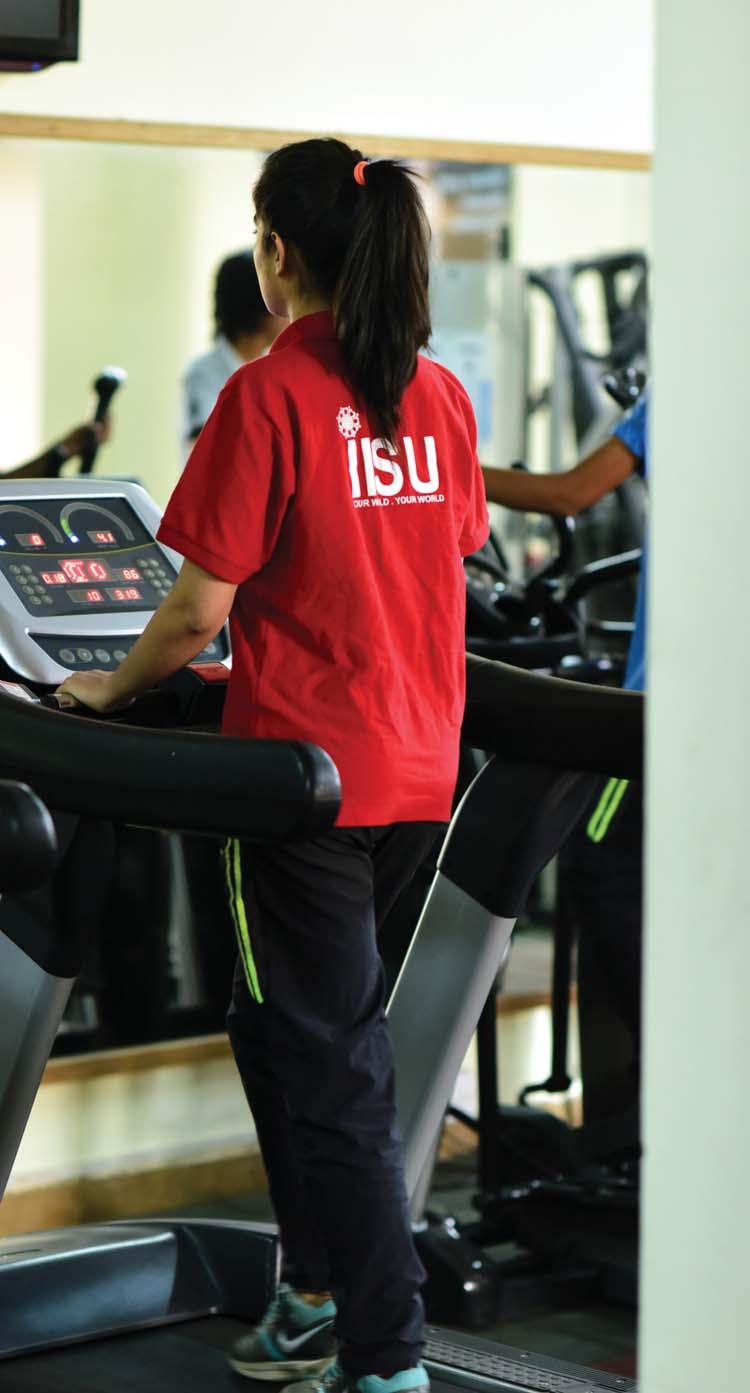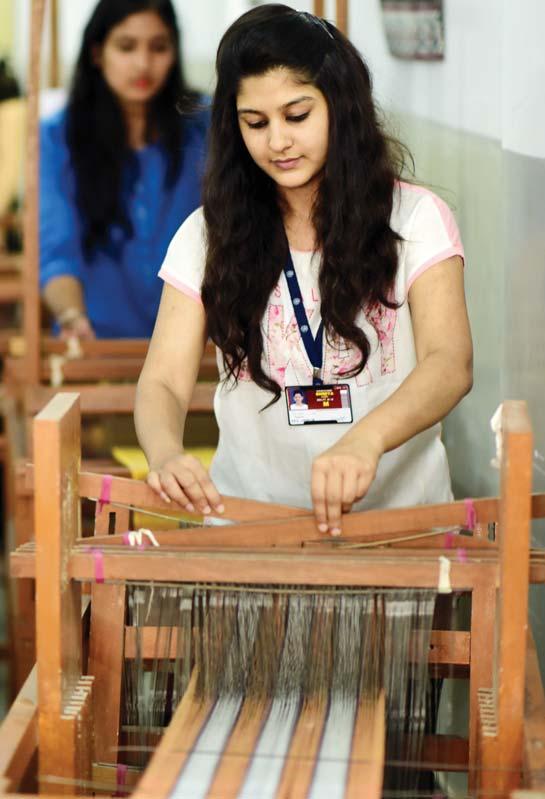









Seated (from left): Treasurer Mikael Ahlberg, President-elect Barry Rassin, President Ian H S Riseley, Vice President Dean Rohrs, Executive Committ ee Chair Noel Trevaskis.
Standing (from left): Gérard Allonneau, John C Matthews, Peter Iblher, Brian A E Stoyel, James Ronald Ferrill, Robert C Knuepfer Jr., Basker Chockali ngam, Paulo Augusto Zanardi, Eun-Soo Moon, Keiichi Ishiguro, Jorge Aufranc, Gregory F Yank, Corneliu Dinca, General Secretary John P Hewko, Tadami Saito.

16 Shuddha Jal
Schoolchildren and people of Jalna get safe drinking water, thanks to Shudhu, the magic pill.

24 Innovate…come to me with crazy ideas
At the Agarwal’s Eye Hospital group, its chief Dr Amar Agarwal’s penchant for research and new surgical techniques gives relief to patients with complex eye problems.
32 Making Bengaluru green
RC Bangalore Orchards is making the city green through its environment initiatives.
34 Giving Dignity to the Forgotten
Rotarians and Inner Wheel members of RC Delhi South provide relief and dignity to the inmates of a home for the elderly and the destitute.
51 Yet another medical mission to Nigeria
District 3020 provides medical help to the ailing patients, particularly children, of Ogun in Nigeria.
60 The colourful fabric called Madras
Find out why Bleeding Madras, a fabric iconic to Chennai (formerly Madras), was called so.
72 Wabi Sabi
The author explains, through this Japanese ideology, how to make peace with one’s imperfections for a stress-free living.


Read about the men behind the vibrant, decorative masks that make the Chau dance of Purulia a culture signature.
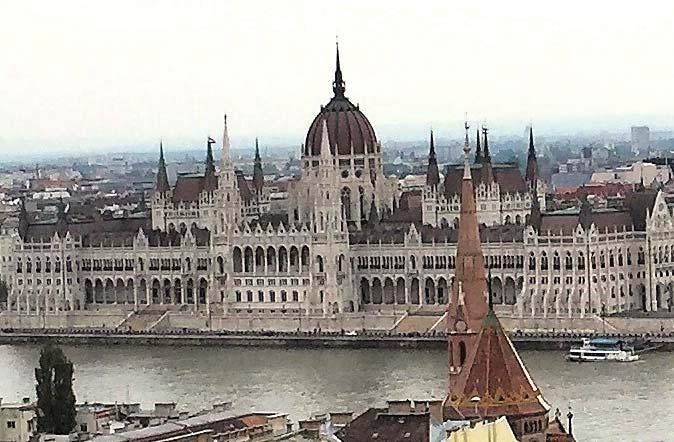
42 A Budapest teaser
Just one day and two nights in a historic city such as Budapest can only whet your appetite for more.
On the cover: Children in a Jalna school quench their thirst drinking water purified by a bioreactor fitted on the hand pump and gifted by RC Jalna Midtown.
Photo Courtesy: Rasheeda Bhagat

It is matter of pride for Rotarians that the GoI acknowledges the supremacy of Rotary ( The power to do good - October Editorial). There is a fire in the Rotarians of India to do something unique and touch new heights by helping senior Rotary leaders who have decided to join hands with the Indian government on Mission Indradhanush , and overcome preventable diseases like measles and rubella. That the Government officials believe that Rotarians have the power and only Rotary can do all this is a big reward in itself. The Editor has aptly concluded “when power is used to do good, it transcends to another level.”
As for the October issue, I am at a loss of words to convey my compliments to Team Rotary News — Jaishree and V Muthukumaran and others, and especially Editor Rasheeda Bhagat (who has written as many as six articles in the issue) for bringing
The Editorial Freedom from misogyny, patriarchy (September issue) is a timely appeal and worth considering. Unwholesome comments of men against women are matched by the strong rhetoric of women who want personal freedom, thus reflecting the ground reality.
Training in martial arts such as karate should be imparted to girl students for their self-defence. But it will be a Herculean task












out a knowledgeable, thought provoking, and above all, a very attractive issue covering all walks of life. All the articles are readable. Breathing life into blue babies and When charity truly began at home deserve special mention. Hats off to Rotarians… go ahead with the mission “Service Above Self”. Raj Kumar Kapoor RC Roopnagar — D 3080
for women to get liberated from the dominance of men. However, let us be optimistic that women get freedom and equality.
G V Sayagavi RC Davanagere Vidyanagar — D 3160
An emotional final journey
Every month, you have succeeded in accommodating various current affairs in the world of Rotary through our esteemed magazine. In the September issue, the cover
photo of a smiling Sam Owori, a great personality who is no more with us, moved the readers emotionally.
The article Sam Owori’s final journey by a much loved senior RI leader, PRIP K R Ravindran, is evocative and heart-rending. The remark by PRIP Rajendra K Sahoo that even in death Sam had brought glory to Rotary was really striking.
Col Gopinathan, RC Wadakanchery — D 3201
D 3000 makes an impact
Iam filled with joy on seeing RI District 3000 on a number of pages in the October issue.
Starting with my good friend PP R Srinivasan’s letter, then to the write-up Karur Angels promote Rotary and finally the introduction of DG P Gopalakrishnan by Jaishree (Meet your Governors), the presence of this district is felt all over the pages. In the Club Matters too, District 3000 is represented by RC Dindigul. We are proud of our DG Gopalakrishnan. Nan Narayenen RC Madurai West — D 3000
Queue jumping
AlthoughI am just an ordinary member of the Rotary Club of Madurai NextGen, I read Rotary News thoroughly as it covers a wide range of topics apart from Rotary and its activities. One of my favourite sections is the Book Review as I buy many of the books reviewed in its pages. The review by H S Khurana of The Good Indian’s Guide to Queue-Jumping deliberates on many habits of the Indian people in general. I would like to share my experience of queue-jumping in the US long back.
On the first visit in Disney World, I missed my group members and
found them far away in the serpentine queue. The barriers were only made of rope, which could easily be removed for easy access to the next bay. There was no security guard to man the queue either. My tour guide shouted in Hindi to cross the rope barriers and move ahead. Though embarrassed, I didn’t want to be left behind by my group and hence had to jump queue. But no one questioned me.
The second instance was at the JFK Airport in New York. After check-in, I found that I had only 20 minutes for the gates to close. After seeing the long queue, I went up to the guard and showed my boarding pass, and was given quick access to the security check area to enable me to be just in time for my flight. In both the cases there were no murmurs or complaints over the priority I got. I am sure had I been in India, there would have been a big ruckus over this. Probably that’s the reason we have mastered ‘the art of queue management’ at places like Tirupati.
S P A Ganesh
RC Madurai NextGen — D 3000
Seed balls: Make it a movement
The article Seed balls to green the Earth by Karthik V is excellent. The Rotary Club of Shimoga has joined the hands with an NGO Utthistha Bharatha to take up the initiative this year and already planted around 15,000 seed balls near the Shimoga forests.
Let all Rotary clubs make a movement of the seed ball project and pursue it with passion just as we did in the case of PolioPlus, and for saving our forests from denudation and contribute in reducing global warming.
Veeranna A Huggi
RC Shimoga — D 3182
We welcome your feedback. Write to the Editor: rotarynews@rosaonline.org; rushbhagat@gmail.com

Rotary News will be bringing out an online version of Rotaract News from January 2018.
Rotary clubs interested in featuring activities of their Rotaract clubs may please send reports of their good projects along with candid pictures.
Please email high resolution pictures in original size in .jpg or .tiff format. No embedding photos in the word file. No ribbon cutting, lighting the lamp.
Rotaract projects can be in any of the following focus areas — Literacy / vocational skill development, health, disease prevention, mother/child welfare and water and sanitation.
Mention the name of the Rotaract club, district number, contact details of the person leading the project, where was it done, value of the project and number of people it benefitted.
- Editor
RI Dist 2981
RI Dist 2982
DG P S Ramesh Babu
DG Dharmesh R Patel
RI Dist 3000 DG P Gopalakrishnan
RI Dist 3011 DG Ravi Choudhary
RI Dist 3012 DG Sattish Singhal
RI Dist 3020 DG G V Rama Rao
RI Dist 3030 DG Dr K Sunder Rajan
RI Dist 3040 DG Dr Zamin Hussain
RI Dist 3053 DG Rajkumar Bhutoria
RI Dist 3054 DG Maullin Manubhai Patel
RI Dist 3060 DG Ruchir Anirudh Jani
RI Dist 3070 DG Parvinder Jit Singh
RI Dist 3080 DG T K Ruby
RI Dist 3090 DG Bagh Singh Pannu
RI Dist 3110 DG Vinay Kumar Asthana
RI Dist 3120 DG Ranjeet Singh
RI Dist 3131 DG Abhay Gadgil
RI Dist 3132 DG Vyankatesh Vithal Channa
RI Dist 3141 DG Prafull J Sharma
RI Dist 3142 DG B M Sivarraj
RI Dist 3150 DG J Abraham
RI Dist 3160 DG Madhu Prasad Kuruvadi
RI Dist 3170 DG Anand G Kulkarni
RI Dist 3181 DG M M Chengappa
RI Dist 3182 DG G N Prakash
RI Dist 3190 DG Asha Prasanna Kumar
RI Dist 3201 DG Vinod Krishnan Kutty
RI Dist 3202 DG Sivashankaran P M
RI Dist 3211 DG Suresh Mathew
RI Dist 3212 DG Chinnadurai Abdullah
RI Dist 3231 DG Jawarilal Jain K
RI Dist 3232 DG R Srinivasan
RI Dist 3240 DG Sunil Saraf
RI Dist 3250 DG Vivek Kumar
RI Dist 3261 DG Harjit Singh Hura
RI Dist 3262 DG Ajay Agarwal
RI Dist 3291 DG Brojo Gopal Kundu
Printed by Mukesh Arneja at Thomson Press (India) Ltd, Plot A-9, Industrial Complex, Maraimalai Nagar 603209, India and published by Mukesh Arneja on behalf of Rotary News Trust from Dugar Towers, 3rd Flr, 34, Marshalls Road, Egmore, Chennai 600 008. Editor: Rasheeda Bhagat.
Board of Permanent Trustees & Executive Committee
PRIP Rajendra K Saboo RI Dist 3080
PRIP Kalyan Banerjee RI Dist 3060
PRID Sudarshan Agarwal RI Dist 3011
PRID Panduranga Setty RI Dist 3190
PRID Sushil Gupta RI Dist 3011
PRID Ashok Mahajan RI Dist 3141
PRID Yash Pal Das RI Dist 3080
PRID Shekhar Mehta RI Dist 3291
PRID P T Prabhakhar RI Dist 3232
PRID Dr Manoj D Desai RI Dist 3060
RID C Basker RI Dist 3000
Executive Committee Members (2017–18)
DG B M Sivarraj RI Dist 3142
Chair – Governors Council
DG R Srinivasan RI Dist 3232
Secretary – Governors Council
DG Abhay Gadgil RI Dist 3131
Secretary – Executive Committee
DG Vivek Kumar RI Dist 3250
Treasurer – Executive Committee
DG P Gopalakrishnan RI Dist 3000
Member – Advisory Committee
Editor Rasheeda Bhagat
Senior Assistant Editor Jaishree Padmanabhan
Send all correspondence and subscriptions to
ROTARY NEWS TRUST
3rd Floor, Dugar Towers, 34 Marshalls Road Egmore, Chennai 600 008, India.
Phone : 044 42145666 e-mail : rotarynews@rosaonline.org
Website : www.rotarynewsonline.org
The views expressed by contributors are not necessarily those of the Editor orTrustees of Rotary NewsTrust (RNT) or Rotary International (RI). No liability can be accepted for any loss arising from editorial or advertisement content. Contributions – original content – are welcome but the Editor reserves the right to edit for clarity or length. Content can be reproduced, but with permission from RNT

ome of the most beautiful things come in small packages, it is said. But small is much more than beautiful, it has the potential to bloom into a much larger image or clone of itself. A small and simple idea that is replicable and can be scaled up is exactly the sustainability mantra that Rotary International has been advocating. Hence, when the Rotary Club of Jalna Midtown sent Rotary News a small write-up with a few staid pictures of the club having distributed one lakh Shudhu tablets which cost them Re 1, a heavily subsidised price given by the manufacturer, free of cost to 3,300 families in Jalna town in Maharashtra and its surrounding villages, it caught the eye. This tiny pill, when put in a pot of 15 to 20 litres of water can purify it in less than 30 minutes. It sounds like a very small project — after all one lakh tablets cost the club only Rs 1,00,000. But imagine what this seed of an idea — I heard Jalna described as the seed capital of India here — can do to solve the huge drinking water problem of India, where millions do not have access to safe drinking water. Anup Karwa, the young president of the club where all the 65 members are under 40, has been smart enough to get a commitment from the manufacturer assuring supply of this tablet to Rotarians at Re 1 for the next two years. The same tablet is supplied to the Indian Army and was also distributed during the Chennai and Gujarat floods by the manufacturer. The club members were surprised, but also exhilarated, to have the Editor of their magazine volunteering to travel to Jalna to tell the story from ground zero. I made the trip because this club of youngsters had
another bigger and more impactful water purification project coming up — Project Taral. This involves fitting a bioreactor, which recently won the national innovation award for 2017, and can be fitted on any hand pump. It uses vacuum, thermodynamics, pressure and temperature to purify water by killing microbes. A ‘fit and forget’ solution, the cost of the device, along with the labour, is between Rs 12,000–15,000, and ensures that the water dispensed by the hand pump is safe and edible.
It was heartening to see the presence of senior Rotarians and members from the other three clubs in Jalna at the inauguration of Taral in a primary school. Politics, unhealthy competition, rivalry seemed absent. The result was a beaming Kiran Authi, the headmistress of the zilla parishad school, saying that the Rotarians had virtually adopted her school! Even though a very modest, two-room building without a compound wall, where the children sat on the floor, the school was spanking clean, and thanks to Jalna’s Rotarians, it has a big Sintex water tank, 80 per of its curriculum has the e-learning component, and many health care needs of the disadvantaged children have been taken care of by the Rotarians.
Read the cover story to find how absenteeism came down in the schools this monsoon season, as waterborne diseases like diarrhoea, jaundice, typhoid, etc were checked by the tiny Shudhu tablet. By taking care of the health care and educational needs of our children, Rotary clubs in India are making an invaluable contribution to India’s march towards progress and development. After all, you Rotarians did work so tirelessly to make India Polio-free, didn’t you?
Rasheeda Bhagat
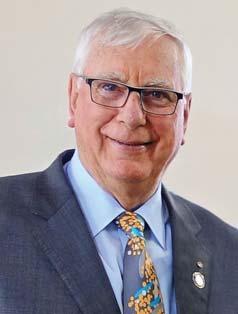
Dear Fellow Rotarians,
In many ways, The Rotary Foundation is an invisible presence in our clubs. Most of what we do in our clubs and our districts, on a weekly basis, we do without the active involvement of the Foundation. But our Foundation is invisible in our clubs in the same way the foundation of a building is invisible when you’re in it: Just because you don’t see it doesn’t mean it’s not holding you up.
The Foundation that enabled Rotary to take on polio is, in many ways, the foundation upon which our Rotary service is built. For 100 years, since it came into existence with a first donation of $26.50, the Foundation has supported and strengthened our service, enabled our ambitions, and allowed us to be the organisation that we are. Because of the Foundation, Rotarians know that if we have the ambition and put in the work, very little is truly beyond us.
It is an incredibly effective model that we have here in Rotary, one that no other organisation can match. We are completely local and completely global: We have local skills, connections and knowledge in over 35,000 clubs, in nearly every country of the world. We have a deserved reputation for transparency, effectiveness and good business practices, and because we are highly skilled professionals as well as volunteers, we achieve a level of efficiency that very few other organisations can approach.
To put it simply, a dollar given to The Rotary Foundation has a great deal more muscle than a dollar given to most charities. If you want to spend a dollar on Doing Good in the World, you can’t do better than to spend it with the Foundation. That is not just me speaking out of pride; it is verifiably true and is reflected in our rankings by independent organisations.
In the Foundation’s centennial year, Rotarians surpassed our goal of raising $300 million. If you were part of that achievement, you have been part of something tremendous. Somewhere in the world, someplace you have probably never been, people you may never meet will lead better lives because of you. Ultimately, it is our Foundation that lets us make good on our core beliefs: that we can make a difference, that we have an obligation to do so, and that working together, as well and as efficiently as we can, is the only way to effect real and lasting change.

President, Rotary International
Ian H S Riseley ent, Intern

Dear Rotarians,
I share with you some insights about three Rotarians who inspired me to become a Rotarian.
First was the founder of Rotary Paul Harris. I was motivated by his words: “Whatever Rotary may mean to us, to the world it will be known by the results it achieves.” Rotary started with his vision and he formed one of the world’s first service organisations, the Rotary Club of Chicago, 112 years ago as an informal meeting ground where professionals from diverse backgrounds could freely exchange ideas and form meaningful, lifelong friendships. True to Paul Harris’ words Rotarians are achievers.
The second Rotarian was the father of The Rotary Foundation Arch C Klumph. He set up the Endowment Fund “for the purpose of doing good in the world” by contributing $26.50, and triggered the thought of giving amongst Rotarians. Today TRF is one of the biggest philanthropic trusts in the world. Giving has become a habit of Rotarians... India is the second largest contributor to TRF. Giving works because Rotary works. We are proud that 91 per cent of donations go to supporting sustainable humanitarian service projects world over. We’ve wiped out 99.9 percent of all polio cases. Every small contribution works. A child can be protected from polio with as little as 60 cents. Our partners make your donation go even farther. For
every $1 Rotary commits to polio eradication, the Bill and Melinda Gates Foundation will commit $2. Your contributions train future peacemakers, support clean water and strengthen local economies. Let us give more to TRF and be a part of it. This is a great opportunity to show Rotary: Making a Difference.
The third Rotarian is Herbert J Taylor. He showed us the ethical way of living and introduced the Four-Way Test. He proved to the world the power of the Four-Way Test by applying it in his own business, turning it from a loss-making to profitable one. The Four-Way Test — Is it the truth? Is it fair to all concerned? Will it build goodwill and better friendships? and Will it be beneficial to all concerned? — is the real taraka mantra to uphold the ethical standards in every sphere of life. This is Rotary’s inbuilt stewardship, the need of the hour, for every Rotarian to be equipped with. Rotary’s ideal of service and fellowship is based on the Four-Way Test. It turns acquaintances into true friendships and is the reason why projects like PolioPlus have become grand successes.
We cannot however live on our past successes. We must endeavour to do better. Almost 800 million people live on less than Rs 125 a day. There are so many projects we can take and make a positive difference in the lives of the lesser privileged. Rotarians are passionate people; they have the energy and innovative ideas to provide sustainable solutions to reduce poverty. The Rotary Foundation spent $9.2 million to grow local economies and reduce poverty last year. It takes $24 to provide safe water for one person. Because of Rotary, 23 million people now have safe water and 21 million people have access to sanitation and hygiene. Thanks to The Rotary Foundation. Rotary hopes to finish providing everyone with safe water, sanitation and hygiene by 2030.
Let us contribute more to The Rotary Foundation and demonstrate to the world, Rotary: Making a Difference.

C Basker Director, Rotary International

A few months ago, I raised the question, “What do the Trustees do, anyway?” I reflected that a critical role of ours is to listen. This month, Rotary Foundation Month, I can happily report that you speak volumes — and that you are heard.
The late RI President-elect Sam F Owori said he saw in Rotarians “an incredible passion to make a difference” and wanted to “harness that enthusiasm and pride so that every project becomes the engine of peace and prosperity.”
From your letters, reports and wonderful stories, we know you share Sam’s vision of a world where Rotarians unite and take action to create sustainable change — across the globe, in our communities, and in ourselves. Last year we saw an increase in the number of global and district grants initiated and another record high in Rotary Peace Fellowship applications. We also saw increased totals in overall giving, reflecting your passion for what we do as “People of Action”. A special thanks to Rotary’s club and district leaders for providing continuity in all our endeavours.
Recognition as the World’s Outstanding Foundation by the Association of Fundraising Professionals at its international convention affirms the work you are helping make possible. AFP’s committee of judges cited Rotary’s comprehensive campaign to eradicate polio as a major factor in the Foundation’s selection.
To Benefactors, Bequest Society members and all levels of Major Donors, thank you! You are building financial stability for the future. Our Endowment Fund continues to grow because of your belief in the Foundation and its continually evolving programmes. We are well underway with our “Building TRF Endowment: 2025 by 2025” initiative — to achieve $2.025 billion in gifts and commitments by 2025.
As one Rotarian to another, from my heart to yours, please accept my personal thanks for your unflagging work and many accomplishments over the years. One of the genuine privileges of serving in a key leadership role in Rotary is being able to continue learning from Rotarian friends as passionate and committed as you.
Let us celebrate Rotary Foundation Month together!
Thank you. Thank you.
Paul A Netzel Foundation Trustee Chair
Send me your thoughts on the Foundation. Paul.Netzel@rotary.org. We are listening!


The 2016–17 recipients of The Rotary Foundation Distinguished Service Award and Citation for Meritorious Service have been announced. The Distinguished Service Award is the Foundation’s highest recognition of active service. Rotarians become eligible for the award four years after receiving the Citation for Meritorious Service, which recognises individuals who have provided significant service to the Foundation for more than a year.
Service Award
Ashis Roy 3170 Pranesh Jahagirdar 3262 Bhabani Prasad Chowdhury 3291 Anirudha Roy Chowdhury
for Meritorious Service
2981 G Gunasekar
L Subbiah
Jagadeeswararao Maddu
Kishor Ratanlal Kedia
Ashok Kumar Tanted
Lalit Sharma
Anil Agarwal 3070 Gurjeet Singh Sekhon
Shyam Ji Sharma
Rakesh Bhargava 3141 Subhash Rajaram Kulkarni 3141 Nirav Niranjan Shah 3142 Ashes Ganguly
3150 Ch Chilukuri Sarat Babu 3170 Venkatesh H Deshpande 3240 Ashok Kumar
3262 Saumya Ranjan Mishra 3262 Asha Mishra
* Excludes Bill and Melinda Gates Foundation. Source:

We at Rotary News are pleased to bring you the results of an online survey done through the website www.surveymonkey.com. Under this, about 10,000 random emails were sent to Rotarians; 1,011 have responded till now and we are gratified to know that almost 82 per cent of our readers are happy with the quality of Rotary News
While 69.3 per cent are happy with the choice of topics, 71.46 per cent think that the quality of the magazine has
improved in the last few years and 53.68 per cent are happy with the quality of non-Rotary content, with 40.66 per cent finding it Ok!
Thanks to all those who responded, as well as to our Graphic Designer Krishnapratheesh for initiating this survey and meticulously following it up.
Editor






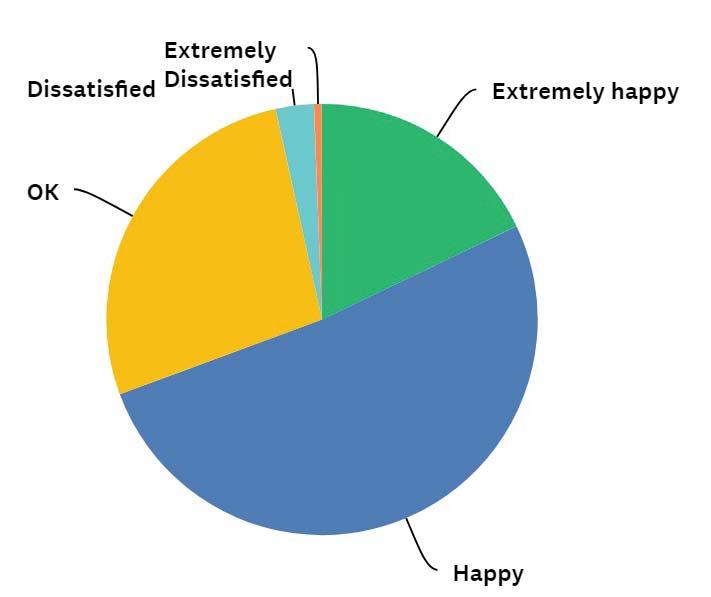
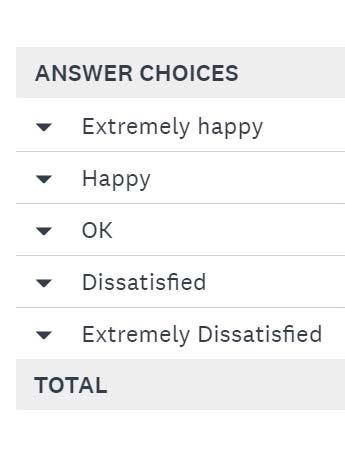








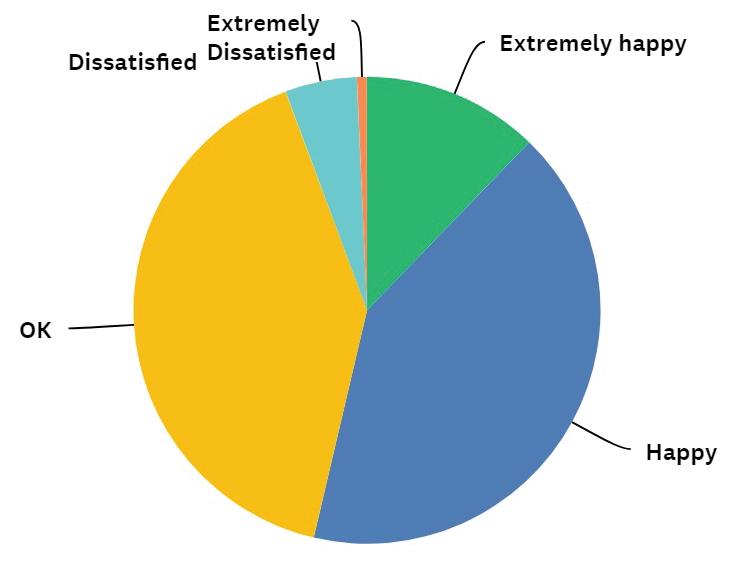




Rasheeda Bhagat
Ranjani Vaidya makes khichdi for the children in the Zilla Parishad primary school in Gundewadi, about 10 km from Jalna, a town in Maharashtra famous for making quality seeds. The distance might be short, but a part of the ride is rickety as the road is pothole ridden. About 150 students, almost all children of labourers — agricultural
and industrial — study here. Her forthright manner of speaking, the confidence she displays while answering your questions prompts me to advise her to contest for the next panchayat elections.
As in any school in India’s villages, the bright and energetic youngsters flash shy smiles, and are soon grinning and chatting away. They find it so easy to share their dreams;
their world might be small, but not their worldview. Pallavi Gajjar is in Class 5 and wants to become an IPS officer; Aditya Ganesh, whose father works at the local grain market, wants to wear the khakhi vardhi too, by becoming a policeman. The chirpy Neha Jadav wants to become a doctor.
All these children are the recipients of the tiny little magic pill…


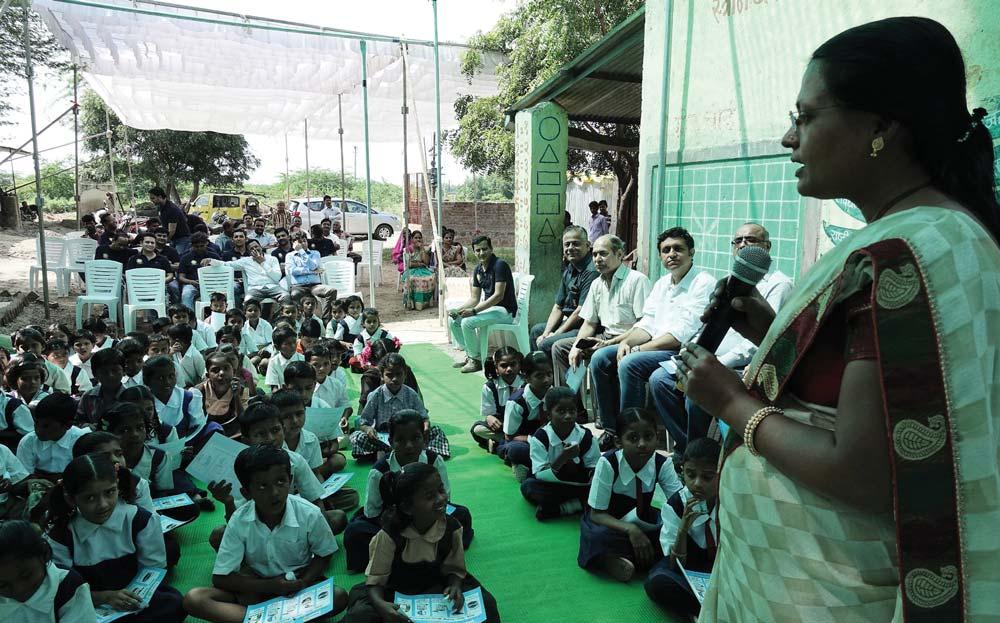
a pill that can effortlessly transform their tap water into shuddha jal (pure water) and is named Shudhu. Just a month earlier, members of the Rotary Club of Jalna Midtown, D 3132, have distributed bottles of 30 tablets to each student. As Neha and her sister study in this school, they got 60 tablets and still have a supply to ensure they drink pure water.
“This tablet is like dispirin, you just have to drop it in a vessel containing 15 to 20 litres of water, after filtering the water to remove impurities such as mud, and in 25–30 minutes you get pure water,” explains Anup Karwa, President of RC Jalna Midtown, the brain behind this project.
Iam at Jalna at the end of the monsoon season; the town is barely 60 km from the Aurangabad airport and as we drive from there to the
It is like the Rotarians have adopted and divided the school among them — for e-Learning, a water tank, free healthcare and now pure drinking water.
town, the lush green countryside — crops such as wheat, maize, millets, and of course cotton, are mainly grown in this belt — provides a picturesque backdrop and the smooth road, a State highway, is an indicator of the long distance India has traversed on improving our roads.
Karwa explains that even though it revived late, the monsoon has brought good rains to Jalna and the water tables have improved. But a perennial problem in this region is that villages in this area do not get treated water, and the villagers consume water from borewells or plain hand pumps as it is. For the last
three years, this region in the Deccan Plateau has faced severe drought and water has been a scarce commodity. And from whatever source it comes, it is consumed, causing waterborne diseases, such as typhoid, diarrhoea, cholera, jaundice, etc, particularly in children. “A few years ago, the water shortage was so acute that politicians used to come here to talk about it.
Finally the exasperated villagers said: ‘Come only if you can bring along your own water for drinking and other usage, otherwise don’t come! Because they were bringing 2,000 followers with them for political meetings and consuming the scarce water resources here,” says Karwa.
Finally, a water source was established but only for a part of the district; “a major part of this region is still dependent on groundwater and tankers,” he says, adding, “which is ironic because I’d say Jalna is the agricultural capital of India. All the seed companies are located here. The British used to trade in cotton from
Jalna, so it has historic significance and even giant MNCs such as Monsanto are present here.”
Hailing from an agricultural background — his joint family owns over 150 acres of land where various crops are grown and a variety of seeds produced for cotton, vegetables, maize, etc — Karwa himself is an agricultural scientist with a doctorate from a German research centre in
Plant Molecular Biology…
“actually I have two Masters in molecular genetics from UK and one more on bio-safety through distance learning.” Agricultural research engages a good part of the three Karwa brothers’ joint family business. I am hosted in their palatial house, which is so designed to accommodate three independent houses that seamlessly merge into each other.

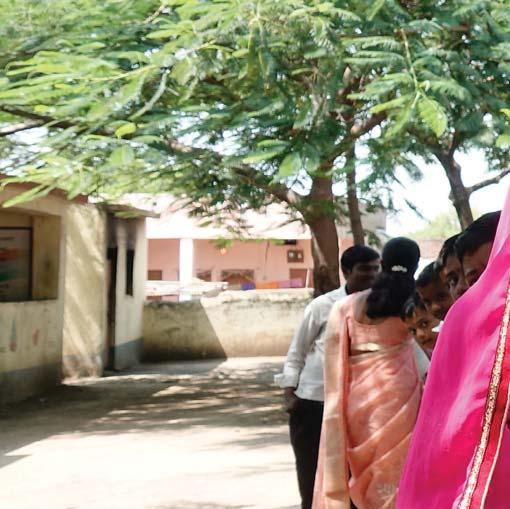
Project Shudhu takes shape
Packed with both energy and passion, he joined Rotary some 18 months ago when RC Jalna Midtown was chartered; he decided to work in the area of ensuring pure drinking water to the villagers, particularly the children who were frequently afflicted with waterborne preventable disease in the monsoon season and frequently missing classes.
Not only is the club young; all its 65 members are under 40, and like several young Rotary leaders, the 35-year-old
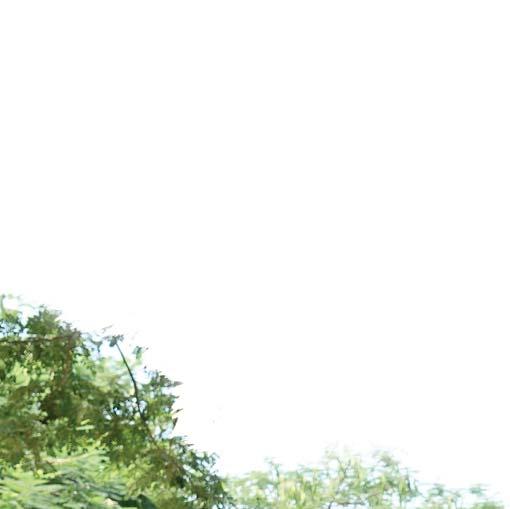
Karwa, who has young children, often has to answer tough questions at home on why he needs to devote so much time for Rotary! He quotes verbatim from a Rotary News profile of Past RI President Rajendra Saboo, and smiles: “Even such a tall leader had to face such questions at home!”
Karwa started working on the Shudhu project in which tiny pills are used to purify 15 to 20 litres of water when he was President-elect. Shudhu (name of the tablet made by a pharma major) has a very simple low-cost technology and so can easily reach the masses. “It is an efficient, easy and economical water purification method, and
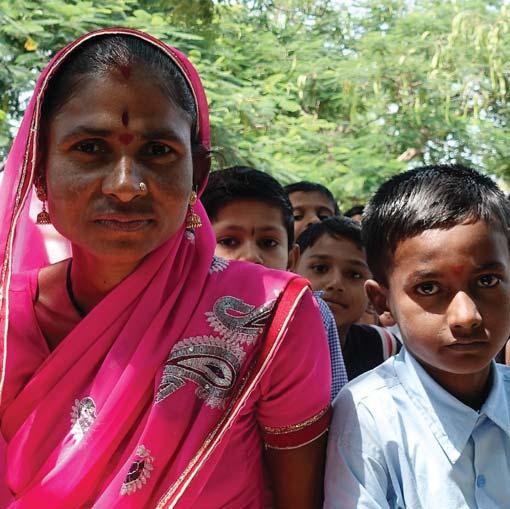

the tablet purifies the water by taking out of it all pathogens, without leaving any odour or colour,” he says. The club has signed an MoU with the pharma company which has supplied one lakh tablets to it at a subsidised rate of Re 1 each. This is possible as the money comes from the company’s welfare arm and government subsidy, he explains.
The tablets come packed in tubes of 30 and the club has distributed them to 3,300 families, for a month’s supply of drinking water. The beneficiaries are mostly schoolchildren and their families and industrial workers from the companies which had given
the club some CSR funds for this and other projects, says Deepak Gelda, Chairman of the project.
Let’s cut back to Ranjani Vaidya and the Gundewadi government primary school, where the children have already received the Shudhu tablets, and I am there to study its impact. Ranjani’s family got three bottles of 30 tablets each as she has two sons and one niece studying here. She will soon run out of the free tablets, of which Rotary can’t ensure a perennial free supply. So if they were available in the market, would she spend

Ranjani
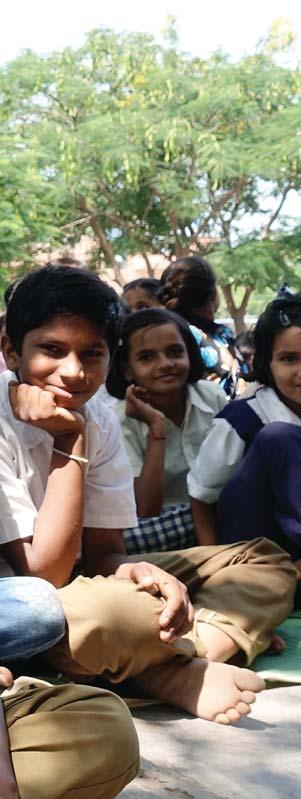
Shudhu tablet has a very simple low-cost technology and can easily reach the masses. It was supplied
the Indian Army is using it in Siachen.
Rs 30 to buy a month’s supply, month after month, I ask the woman who gets a monthly wage of Rs 1,000 for a few hours work to make the khichdi
water in her home, “even after seven days the water remains clear and I don’t see any jeev-jantu (worms) in the water, which happens with ordinary tap water. Is tablet se toh pani bilkul saaf rehta hei,” she beams.





The answer is a confident “Why would I not?” She explains that every time during the monsoon rains, when the tap water is muddy and more impure than usual, the children often fall ill with either a viral infection, particularly, or diarrhoea. “And that costs us Rs 500 to take the child to the doctor.” While the doctor and the medicines cost Rs 300, she has to spend Rs 200 on an auto rickshaw to traverse the rickety road to Jalna. She says this season, none of the children have fallen ill, and haven’t missed a single day of school.
In the Indian context, where a decent free noon meal is provided to all schoolchildren, a healthy child attending school means not only one chore less for a woman but also a saving, however modest, in the monthly food budget. Much more important, she, or other parents like her, most of whom are daily wage earners, doesn’t lose the daily wage.
What is more, adds Ranjani, when she uses the Shudhu tablets to purify
Shamal Sapan, the teacher for Class 4, confirms what Ranjani has said. She herself has an RO water purifier at home. “But almost all the students here are children of labourers and usually during the monsoon season there is a lot of absenteeism. But this season, I see hardly any child being absent and I am happy to report that not a single child has fallen sick with diarrhoea. And they are attending school daily.” She adds that after the Rotarians have distributed these tablets, the teachers do a daily follow-up and ask the students if their mothers are using the tablets and the answer is ‘Yes’.
Dinesh Chhajed, President-elect of the club, explains now that many industrial workers have been given Shudhu tablets, some of the industries have approached the club to ask

if we can get them these tablets on a regular basis. Generally, these factories have water tanks for workers and they want to use a few tablets to purify the water in the tank. “And we have said this can be done.”
On sustainability of Shudhu, Karwa says scaling up the project is not a problem as the pharma company has given them assurance of supply at the subsidised rate of Re 1 a tablet for at least two years. “Apart from industries, our own members have asked for the tablets on a regular basis, to be given to their maids or other workers.”
The tablets, he adds, are safe and effective and have been certified by both WHO and the Red Cross and were supplied during the Assam, Gujarat and Chennai floods. They are also sent regularly to the Indian Army for difficult terrains such as Siachen.
Another water purification project that Karwa and his team are working on is Taral, the
inauguration of which I attended at the Krishna Nagar Zilla Parishad primary school in Jamwadi village, about 7 km from Jalna town. This magic device or bioreactor, which recently won the national innovation award for 2017 from Prime Minister Narendra Modi, has been innovated by a start-up company in Mumbai.
The bioreactor (see picture) can be fitted on any hand pump, and uses vacuum, thermodynamics, pressure and temperature to purify water by killing microbes.
“It fits inside the hand pump and is a ‘fit and forget’ for a long time
Usually during monsoon there is a lot of absenteeism.
But this season, hardly any child is absent and I’m happy that not a single child has fallen sick with diarrhoea.
device as it requires no maintenance,” explains Dipesh Patni, chairman of the Taral Project. He adds, “It has three filters and is a low cost, economical and powerful solution that requires no electricity to kill most of the microbes, bacteria and fungus in the water and can prevent diseases like typhoid, malaria and jaundice.”
Karwa adds that along with the cost of labour, as the device needs to be fitted inside the hand pump, it costs between Rs 12,000–15,000.
The school is a non-descript two-room building with no compound wall, and is surrounded by very modest basic houses,
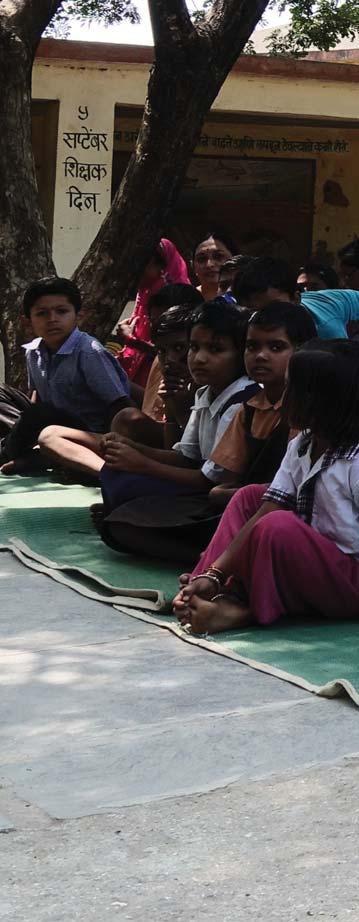
some with buffaloes or goats in their front yard. An odd tractor and a few scooters are parked around the houses. The children’s schoolbags are neatly stacked in front of them on the floor; outside in the corridor, their footwear is neatly arranged. There are two toilets, one for boys and the other for girls, but there is no running water available. The child has to carry water in a bucket while using the toilet. “We chose this school to fit the hand pump with the first bioreactor because this pump caters to the needs of
about 1,000 villagers. Their families collect water from here,” says Chhajed.
In Rotary terminology it is far from a “happy school” as the classrooms are very ordinary, the children are seated on the floor, as there are no benches and desks. But thanks to the intervention of the four Rotary clubs in Jalna, it has its share of happiness alright. What I love about the little meet organised to inaugurate the
hand pump with the new device is that members, particularly the seniors from all the other three Rotary clubs in the town — RCs Jalna, Central and Rainbow, are present to cheer on the inaugural.
The school has some 110 students and the Principal, Kiran Authi, seems to know many Rotarians from the different clubs who have assembled here. When I express surprise, she smiles and says, “The Sintex water tank you see there was given by RC Jalna Rainbow and in 80 per cent
of our classes, e-learning has been introduced thanks to the help of all these Rotary clubs. What a child can’t grasp or learn quickly from a textbook, she does from the screen. All the four Rotary clubs have helped us so much.”
It is like the Rotarians have adopted and divided the school among themselves; she credits RC Jalna Central for organising doctors to treat poor children free of cost. “Actually they offered to hold a health camp here, but you can see our campus; it is so small and


cramped, and also all the parents are daily-wage labourers and they can’t afford to miss a day’s work for a medical check-up, even when done free.”
Karwa has ambitious plans for this “fit and forget” project because it has the potential to reach its benefit to a much larger audience. “This is a dual solution kind of project and we are looking for a global grant to fit such bioreactors into the hand pumps of some 400 government schools in the vicinity of Jalna, and covering a distance of about 100 to 200 kms.” Most of these schools have hand pumps that are also used by the villagers.
He is enthused by the great response he has got from the District Collector Shiva Jondhale, an IAS officer, who has now become an honorary Rotarian of his club. “We
requested him to give us data for all the municipal schools so that we can fit the Taral bioreactor on the hand pumps in those schools. We had the data of 400 schools on an excel sheet on the fifth day!”
He is so passionate about this water purification project that he is already working on some global connections in the Rotary fraternity. “I have already talked to clubs in Germany, US and Spain. But it is not easy to get a positive response quickly; they take time and naturally want to discuss it with their board of directors; there is always a process when it comes to committing funds. I also seek partnerships with other clubs through this article in Rotary News,” he adds. (As the magazine
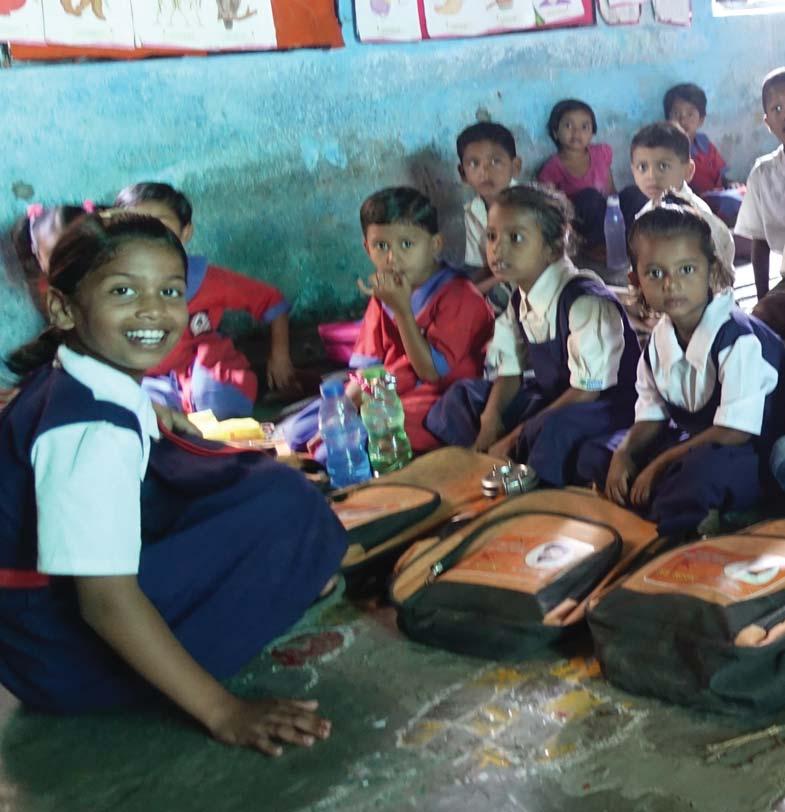
went to print, Karwa was in the US and sent me an excited mail that he had visited a “100-year-old US club and they have shown great interest in doing a global grant with us for both Taral and Shudhu.”)
At the local level he has got commitment for Rs 50,000 from the CSR funds of a company.
“Jalna doesn’t have big industries, but if we can get Rs 50,000 from 10 industries, we get Rs 5 lakh to help a sizeable section of the community,” he says.
This young club president also wants to enlarge the scope of the Taral project by getting the device altered so that it can be fitted onto borewell pumps too. “Once that happens, its benefits can reach individual homes too.”
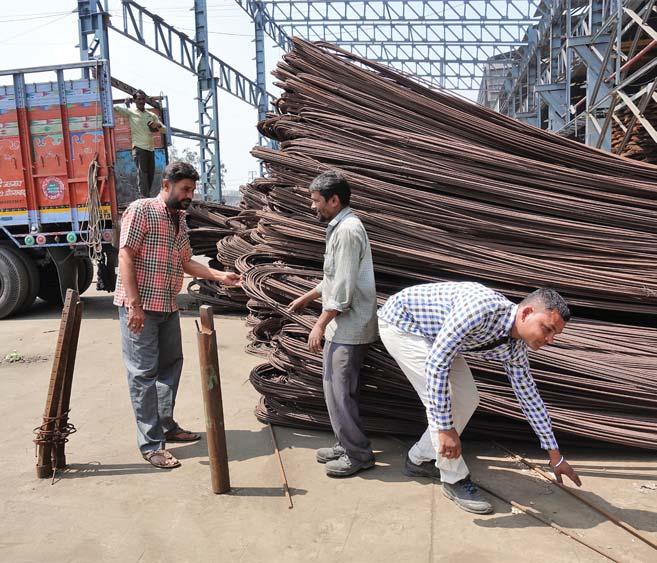

The Jalna Midtown club is also collecting money to help a local community centre called Shri Dutta Ashram headed by a woman, where annually about 1.5 lakh people are given free food. “And this includes three meals, and this is done irrespective of religion, community or caste. It has a meditation centre, and runs education classes for poor children, and most of its donations come from anonymous benefactors.”
The club wants to provide them a solar electrification system to reduce their power bill, which is around Rs 2.5 lakh a month as they have large cold storage space for their kitchen. The project cost is Rs 27 lakh and Karwa has got commitment for one-third of the cost through some CSR funds. For the rest, he approached a Dutch Rotarian who heads the Bengaluru-
based solar equipment manufacturing company which will fit the panels to generate 40 kw power. “I reached out to him to bring a global grant, but their club said they want to do a project in his country. But he was kind enough to waive the Rs 2 lakh that will be the company’s profit.”
That Rotary is active in Jalna can be seen from all the 350 zilla parishad schools being given e-learning kits; with the main contributor being RC Jalna Central. Lowcost handwash stations have been put in many schools and paediatric heart surgeries have also been organised.
For collaboration on this project contact anupkarwa@ gmail.com.
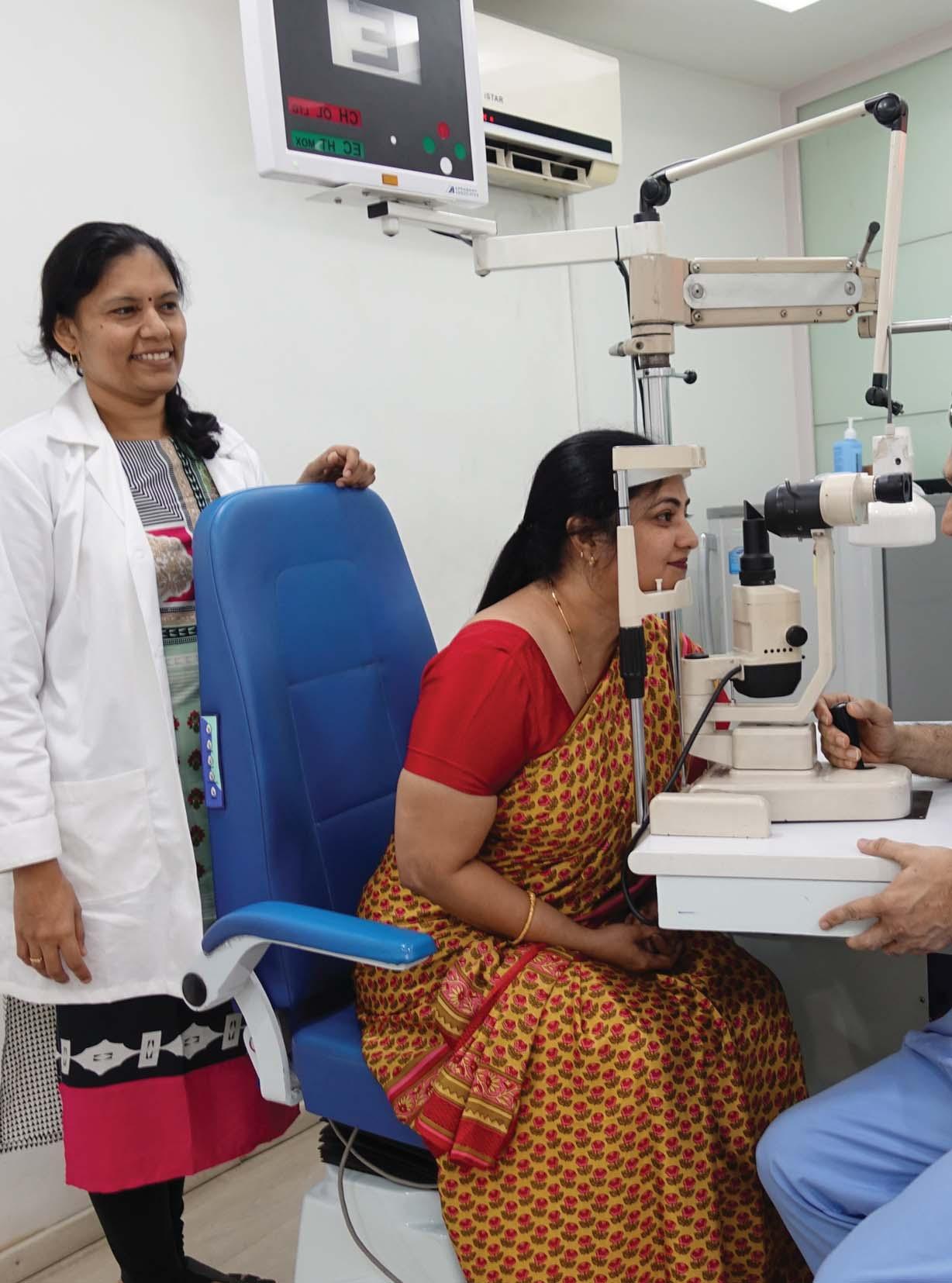
Dr Amar Agarwal, Chairman of Dr Agarwal's group of eye hospitals, examining a patient as CMO Dr S Soundari looks on.

Rasheeda Bhagat
Close your eyes for 10 seconds and you will know how important is the gift of vision,” says noted Ophthalmic Surgeon Dr Amar Agarwal, who hits media headlines regularly for some innovation or the other in eye surgery.
For a moment, his words take me back some 10 to 15 odd years when his father, the late Dr J Agarwal, Chairman of the Dr Agarwal’s group of eye hospitals in Chennai, had told me during an interaction: “Close your eyes for a couple of minutes, you won’t be able to do it, so just imagine the plight of blind people.” His lifelong passion, over a career in ophthalmology spanning 50 years, was to annihilate preventable blindness from India.
The younger Agarwal now heads the Dr Agarwal’s group, which has 75 eye hospitals, 17 in Africa, one coming up in Dubai. “As we speak, a new hospital is opening in Ahmedabad, and by 2020, my vision is to expand to 150 hospitals and have 600 eye surgeons — we now have 350,” he says.
But the nitty gritty of such expansion is done more by his two sons Dr Anosh and Dr Adil, who are trained ophthalmologists but have done management from Harvard and Stanford. Dr Ashar and Dr Ashvin do surgeries, at the Chennai Main Hospital, where he sits. All four sons are eye doctors. I am here to discuss
with Dr Amar Agarwal his passion for research and innovation. Over the years, this centre has handled innumerable complicated and complex eye cases that are turned down by other doctors. As a reporter writing on health care for long years, I have covered several press conferences where he announced a new innovation he had carried out in tackling complex eye problems. He never tires of writing books on ophthalmology, and of course articles for medical journals.
So where does he get this scientific bent of mind and the hunger to do innovative techniques in eye surgery, I ask him. Earlier, Dr S Soundari, Chief Medical Officer (CMO) at the Chennai Main Centre, had told me she has lost count of the number of books he writes. “I would say he lives and breathes ophthalmology. You can get a text message at 10 pm and then again at 1 or 2 am; I don’t know when he sleeps!”
With a glint in his eye, Dr Agarwal answers my question: “Whatever I do or have achieved, is due to divine intervention and has come from the Almighty; no human being has that power. Ideas are human, but you need divine power and help to make them work.” But hard work has of course played a major role. Asked when he sleeps, he smiles and says, “I sleep between 11 pm and 1 or 2 am. Because that is my time to think of new ideas, to write research papers and

books. In the day, I am caught up with operations, seeing patients, and other routine matters.”
A pause and he adds, “But one thing I know, I have got the passion for ophthalmology from both papa and mama (his mother was a renowned ophthalmologist too in Chennai). Can you believe it, they came to Madras from Rajasthan 60 years ago with just Rs 60 in their pockets; without passion, and of course dedication and
He lives and breathes ophthalmology. You can get a text message at 10 pm and then again at 1 or 2 am; I don’t know when he sleeps!
Dr S Soundari,
hard work, such an institution cannot be built.”
Many new ideas and surgical innovations have happened here. When I meet him this time, Dr Agarwal is most excited about having created an easy and replicable surgical technique for closed angle glaucoma. “Unlike in the West, in India we neglect our health and even educated people come
Dr S Soundari examining a patient.
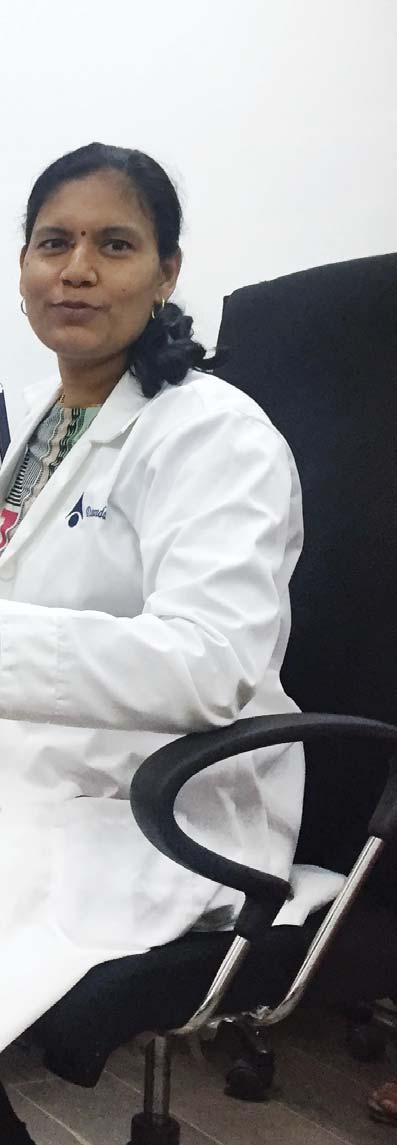
for major eye problems to us at an advanced stage.”
Describing glaucoma as a silent killer where vision can be permanently lost if neglected, he explains that there are two kinds of glaucoma (which is caused by elevated intraocular pressure — IOP — which damages the optic nerve), open and closed-angle glaucoma. “We treat open-angle glaucoma by making a drainage because there is too much of fluid coming into the eye; like there
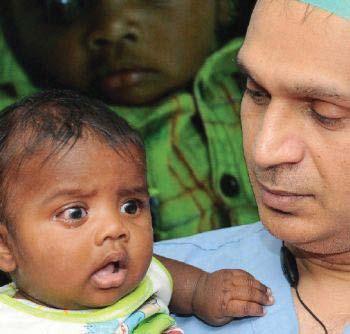
TheIOL is placed inside a capsular bag but if this is injured through an injury, a blast or is broken during surgery, the lens has to be sutured to the sclera or the white part of the eye. “But you never know how long the suture strength will last, and over time the suture can give way, or while suturing the lens can tilt or move a little, affecting vision,” explains Dr S Soundari, Chief Medical Officer. In glued IOL, the surgeon creates a small flap on the sclera, sticks or tucks the lens in between with a glue. “Once stuck, the lens moves along with the eye and not separately, and doesn’t shake, which will affect the vision quality. And this can be done on anybody; we’ve done it on a twomonth-old baby who had no lens at all, and for old people too. The first case we did was on a 10-yearold who came to us with a cracker injury in 2007, and we are still
following up that case,” she adds. In the elderly, this process eliminates what is commonly known as sodabutti (as thick as soda water) glasses. “They can now see without glasses and are extremely happy.”
A rare case Dr Agarwal recalls is that of a three-year-old boy, referred by a Mumbai ophthalmologist, who was born without the iris in both eyes. “There was excess light going into the eyes… it’s like having floodlights focused on your eyes all the time. We needed to reduce that.”
The patient also had a cataract which was removed; as the lens was very badly damaged, “we fixed an IOL with an artificial iris and glued it, so the child had an iris and IOL. Before the surgery he used to sit crouched all the time and shield his eyes with both hands, unable to bear the harsh light. Next day he was walking around the corridor.”
is some problem with the meshwork… either too much water or a block in the drainage."
“But in closed-angle glaucoma, there is not only the drainage problem, the entry to the drainage area is affected. In open-angle the drainage is defective and I repair it by making an opening. But in closed-angle, I am not even able to reach the area where the water is to drain. That is the problem,” says Dr Agarwal.
He has found a simple solution; “now we use a single pass, four-throw pupilloplasty technique — which is basically repairing the pupil. The idea is simple — I make the iris, which is the diaphragm of the eye, taut. When I make it taut, automatically the angle opens and the fluid can nicely drain past.” There are two exciting aspects of this technique; it is so simple that any ophthalmic surgeon anywhere in the world can do it. It doesn’t require great surgical skills, and hence is easily replicable. But even more important, he adds, “through this technique, I am making the anatomy normal, just
as we were born, and not creating a drainage passage.”
Dr Agarwal adds that this surgical technique was used in his hospital for the last three years, on patients with an iris defect or had suffered an injury case, or had a problem being born in a consanguineous marriage, “such as a niece marrying an uncle and similar dangerous practices; genetics play a huge role in such defects.”
So when “we were doing it for three years in such cases, suddenly it struck me why can’t we do the same for glaucoma.” He started, got great results which were published in top medical journals over the last few months. He is thrilled to bits that this simple procedure can be performed by thousands of ophthalmologists, “because glaucoma is a huge blinding problem. Vision lost in glaucoma is permanent; we can cure cataract blindness by removing the cataract and inserting an IOL. But in glaucoma what is lost is lost; as when the IOP goes up, it presses on the nerve

I sleep between 11 pm and 1 or 2 am. Because that is my time to think of new ideas, to write research papers and books. In the day, I am caught up with operations, seeing patients, and other routine matters.
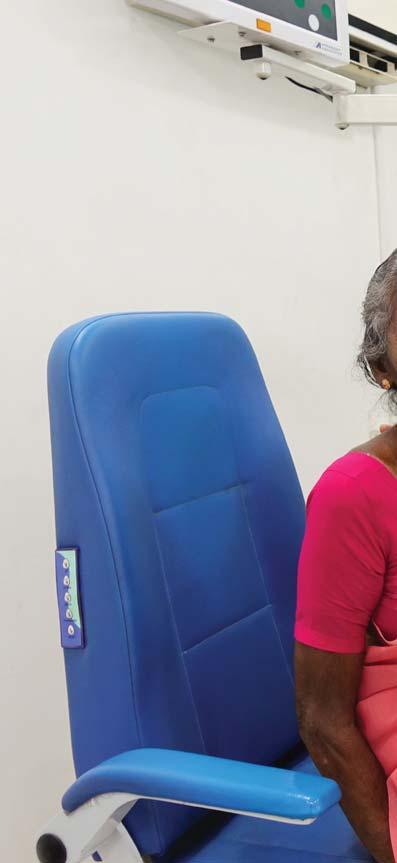
of the eye and damages it, resulting in tubular vision.”
What is unforgivable is that people neglect it, he says and gives the example of a woman in her 40s, who has come to him with severe pain and redness of eye. “Hers is a case of sheer neglect. These people do not realise that in youth, the eye can handle anything, but as you grow older, it can’t. She had come to me three years ago and then disappeared, and has now come and I have to operate, there is no other go. She will get immediate relief of course, but when such educated people are so careless about their eye, how do we blame the lower classes?”
Perhaps she was too busy, I say weakly. Raising his voice, the ophthalmologist says, “Nobody is that busy, it is pure neglect. And she is both

educated and affluent; it is neglect which is absurd and unforgivable."
Dr S Soundari explains the innovations done here on cornea transplant. In earlier times, cornea opacity was being treated by full cornea transplant. “Surgeons replaced the whole cornea when a donor was available, whether the problem was in the front or back; anterior or posterior.” This needed 32 stitches and with the innermost layer — cornea has 15 layers — being “too surgically induced”, during cataract surgery a trauma could result. “So we thought when only the anterior part is involved why change the posterior part of the cornea too, and vice versa.”
The result was a keratoplasty (cornea transplant) which can be either anterior or posterior; which means that one precious donor cornea can be used
for two patients and one pair of donor eyes on four patients… something akin to whole blood transfusion and using different components.
Where the posterior layer or the endothelium, which is very fine — 5–10 microns — is damaged, people started doing Descemet’s Membrane Endothelial Keratoplasty, “but the tissue is so thin that while removing, it tears off and is very difficult to handle. So what we now do is pre-descemets or PDEK technique, which is also taking another adjacent layer which is thicker and doesn’t tear off, and allows easy manoeuvring and the graft can be folded and inserted into the eye. The difference is like the outer and inner covers of a 5 Star chocolate.”
The advantage of the PDEK technique is that this part can be taken even from a very young cornea, and “gives amazing vision to a 60-year-old man,”
she says. Not only that, the rigmarole of removing the sutures, etc, is eliminated “and the patient is able to read very quickly. This technique, which Dr Agarwal pioneered three years ago, changes the entire scenario.”
Dr Amar Agarwal is known for a spate of innovations, and “as we talk he is operating on a patient whose cornea is the size of 6 mm — ours is 11 to 12 mm — or what is called micro cornea, where there is non-development of the iris, the retina, etc. Many doctors had given up on this patient. He has done the other eye where the cornea was also 6 mm, and the patient is so happy with the sight he has got, that he wanted the other eye done too,” says Dr Soundari.
Dr Agarwal agrees that many patients given up by others, end up at the main hospital, which is more a referral centre, where many patients come as a last resort. But he is quick to point out that all the ideas are not his; he only encourages them. He recalls that in 2009, when the parents of an agonised four-month-old boy came to the hospital, the doctors were shocked to see that a good portion of the child’s eye was protruding so badly, that he couldn’t close his eye. The surface of the cornea was rough and the child was in immense pain, couldn’t sleep and cried through the night. Only the previous year, he had innovated what is called glued IOL (intraocular lens), for a cataract surgery (See box).
Dr Agarwal explains that a normal eye transplant could not be done, because a large part of the eye was bulging, the deformity being caused by malnutrition or Vitamin A deficiency. The child’s parents were coolies from Vellore in Tamil Nadu. When he showed pictures of the original eye, they were so grotesque that you had to look away. When they were brainstorming on how to help the child, Senior Consultant Dr Soosan Jacob suggested why not he improve on the
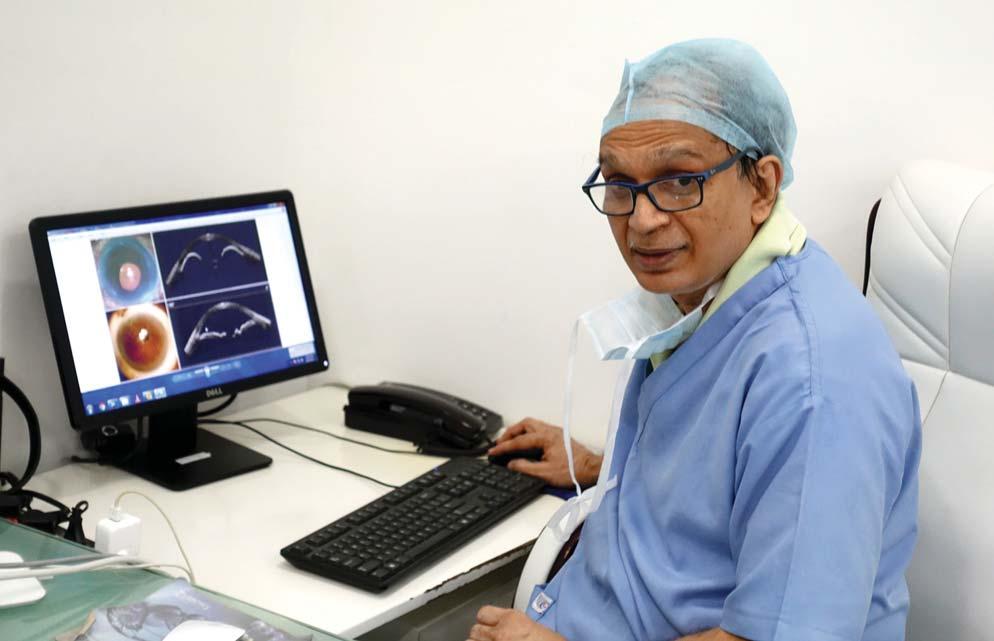
glued IOL procedure he had innovated the previous year. A new idea was born and successfully implemented.
It wasn’t easy — a four-member team of surgeons performed the surgery which lasted four hours and they restored the child’s eyesight with a modification of the glued lens technology. From the donor eye, the sclera and cornea were carved out, and using this as a bio prosthetic graft, a special lens with an artificially built diaphragm was glued to the sclera; the front portion of the eye was put in place, using tissue glue made from blood products and hence was a bioglue, and the eye was closed.
Not only did the child’s look improve dramatically, the mother said, “for the first time in four months he has slept in the night. Earlier, he was screaming with pain all the time.”
Later, in 2014, Tamil music director Shankar Ganesh, whose eyes were badly damaged — vision in right eye totally lost and left eye partially
At the end of the day, nothing is impossible, but you have to keep motivating and challenging people.
damaged — by a mail bomb sent by a ‘fan’, underwent a glued IOL surgery at this hospital and got back his vision after 28 years.
Dr Agarwal hastens to say that “we are not a family business; this is a professional organisation where I give maximum encouragement to new ideas. Anybody who is smart and wants to learn is welcome here.” He wants to make the Agarwal brand a pan-global group touching the 150-hospital mark by 2020. “But the bottleneck is good
manpower. It is simple; people come to us because of our brand and want to work with me to learn things such as glued IOL, PDEK procedure etc. I believe there is talent in everybody; if you give them the opportunity they can grow. I tell my doctors, think out-ofthe-box, come to me with crazy ideas and let’s try them out. Because, at the end of the day, nothing is impossible, but you have to keep motivating and challenging people.”
Like when thanks to his efforts, Mozambique which has a policy of no transplants at all, is now allowing cornea transplant. “We have changed the law for eye transplant there by showing the government how people can be helped. In Mozambique now, PDEK happens too,” he smiles.
Watching him handle elderly patients, with affection and patience, reminds me of his father, Dr J Agarwal, whose smile was sufficient to take away half of the patient’s fear and pain.
Pictures by Rasheeda Bhagat Designed by N Krishnamurthy


Bengaluru, hailed as the garden city, is fast losing its green canopy; “the capital used to be a verdant paradise, a favourite retreat for families seeking respite from the heat of the surrounding southern plains,” laments Aleemula Khan, President of RC Bangalore Orchards, D 3190. Several thousand trees have been axed for widening roads and facilitating expansions in the city.
The Rotarians have undertaken social forestry, planting saplings and sowing seed balls in various locations in an attempt to regain the city’s lost green glory. “Due to space constraint in the city, we have chosen places on the outskirts. Moreover, keeping the surroundings green will help maintain the ecological balance,” he says.
Local schools, corporates and the panchayats have also partnered with
Members of RC Bangalore Orchards plant saplings in KGF area.
the club. The forest department supplied saplings and seed balls. Schoolchildren were also involved in making the seed balls.
In the first phase, around 500 volunteers planted 10,000 saplings and scattered 30,000 seed balls for a week, over 20 acres in Gudnapura, a hillock in Arabikothnur village in Kolar.
In another location, at the Kolar Gold Fields (KGF), 1,500 volunteers participated in planting 45,000 saplings and sowing three lakh seed balls over 100 acres for two days. This area is part of what is known as the ‘cyanide dumps’ that is iconic to KGF. The gold mines of KGF generated millions of tons of tailings called ‘cyanide dumps’ caused by accumulation of slurry wastes of cyanide used for extracting gold from its ore. Over the decades, fine deposits of the

Thankfully this year monsoon was bountiful and all of us are so happy to see greenery bloom in the areas we had just worked.
Aleemula Khan President, RC Bangalore Orchards
poisonous chemical have hardened to form cyanide dumps that dot the KGF area and are a major tourist attraction. However, they are a huge environmental hazard. Several people suffer from respiratory illness caused by the fine dust arising from the dumps; the arsenic content is affecting vegetation and animals too.
When club members Neil Michael Joseph and Ravishankar D suggested to zero in on KGF as the next venue for tree plantation, Khan jumped at the idea. “We cleared the area with JCBs for nearly a month and filled it with composts, making the earth ready for plantations.” Native flora such as pongamia, neem, agave and kamara were planted, besides sowing seed balls.
The club has planned a green drive to plant one lakh saplings and sow five lakh seed balls during the year. “Thankfully this year monsoon was bountiful and all of us are so happy to see greenery bloom in the areas we had just worked,” says Khan. He is gearing up for the next round of plantation drive — this time it is 10,000 saplings and more seed balls in the KGF belt.
Let us encourage peace by forging friendship and improving relationships from within. Peace begins with a smile, which can make a big difference and needs no language. Smile at a person next to you, or a stranger and watch what a powerful impact it makes, said Past RI President Gary Huang at the Rotary Peace Fellowship conference, held in Chennai, in which nine Districts — 2981, 2982, 3000, 3020, 3202, 3211, 3212, 3231 and 3232 — participated.

We need to spread peace. Messages such as sorry, thank you, best wishes, etc pass on a positive energy.
Dr Huz, CEO, Workhardt Foundation
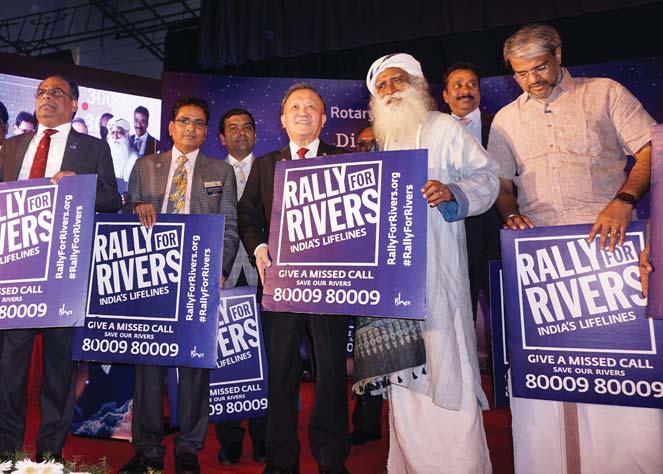
(From L) PDG ISAK Nazar, DGs Vyankatesh Channa, P Gopalakrishnan, PRIP Gary Huang, DGs R Srinivasan and P M Sivashankaran campaign for Rally for Rivers with Sadguru Jaggi Vasudev (third from right).
Quoting Chinese philosopher Confucius, who has said that efforts to put the world in order begin with the family, he urged the audience to spend quality time with their faimilies.
Along with RID C Basker he presented the Rotary Peace Ambassador Award to Dr Huz, CEO, Workhardt Foundation, and Chairman of The Peace Mission.
“We need to spread peace. Messages such as sorry, thank you, best wishes, etc pass on a positive energy,” said Huz, a member of Rotary Club Bombay Bayview.
Peace is within you
The highlight of the programme was a lecture, laced with humour and depth, by Sadguru Jaggi Vasudev, founder of the Isha Foundation. “Peace should come from within. If you cannot keep your mind peaceful, how can you make the world peaceful,” he said.
People talk about world peace but there is no commitment to peace. “You are responsible for what happens within you. If you understand that, you can be at peace. Joys and miseries happen from within you,” he added.
The Sadguru appealed to the Rotarians to create
awareness about the depleting condition of our rivers. “By 2030 we’ll have only 50 per cent of water for our survival. If we do not act now, the legacy we hand over to the next generation will be one of conflict and deprivation.” A simple solution to rejuvenate our rivers is by providing a thick tree cover along the banks, he said, and called for participation in a massive month-long campaign, ‘Rally for Rivers,’ across 16 States that culminated in Delhi on October 3.
PRID P T Prabhakar, DG R Sreenivasan and PDG ISAK Nazar participated, and Rtn J Venugopal chaired the event.
The Rotary Club of Delhi South, D 3011, has partnered with The Earth Saviours Foundation, which runs a Gurukul that takes care of about 400 senior citizens and deprived, abandoned, and homeless women, including some who are victims of rape and sexual abuse. Located in Bandhwari village on the Gurgaon-Faridabad Road, and near Faridabad, the Foundation also has a rescue centre to look after mentally challenged people. Within the Gurukul, the Jia Nari Niketan, which looks after the destitute women, has launched many environmental initiatives.
The women are given board and lodging totally free of charge, and they also get some job opportunities along with a monthly stipend.
This Foundation, says Pradeep Bahri, Secretary of the club, is an internationally recognised NGO, founded in 2008 by Ravi Kalra, a well-known social activist and environmentalist. Starting off as an old age home to take care of abandoned elderly people, the Foundation is also making every attempt to protect the environment. “Finding its core values — service to humanity and protecting the environment — similar to
those of Rotary, our club decided to help their efforts, as we found its selfless and dedicated staff working day and night for community welfare.”
Presently more than 350 abandoned senior citizens, apart from destitute women and disabled people are living permanently at the Gurukul. All the basic facilities including dormitory accommodation, hygienically prepared meals, medical facilities and dayto-day needs are being provided completely free of charge to the inmates.
In India it is a common, though painful sight to see a large number of
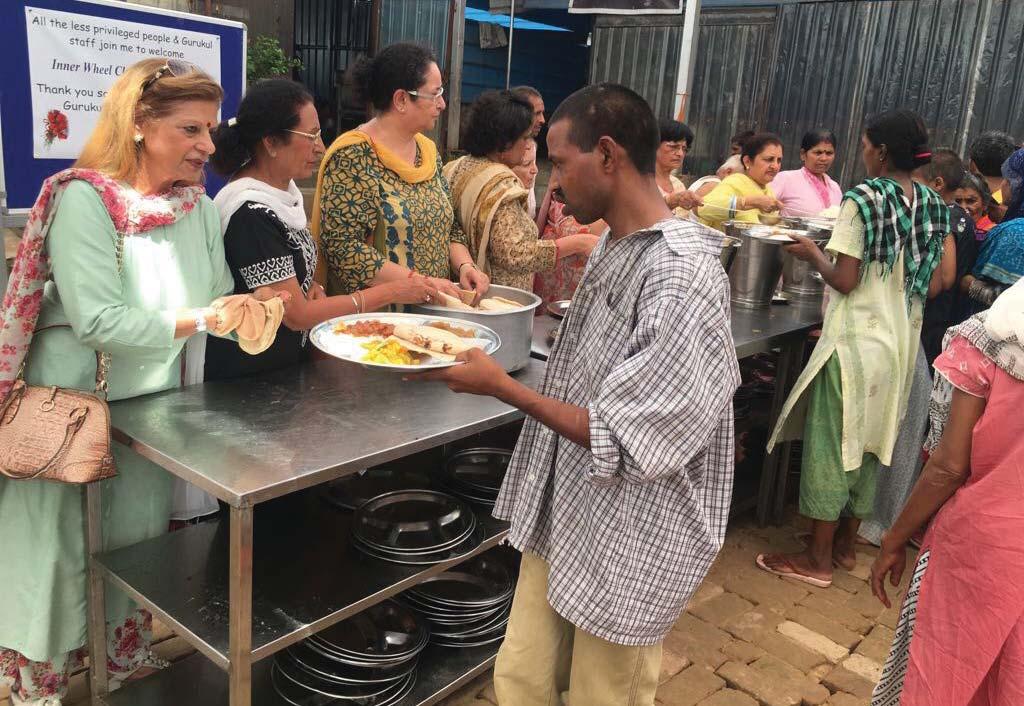
mentally challenged people on roads, says Som Dua, past president of the club. “Often, they have been observed eating from stinking garbage, having no bath for years, no roof over their heads and walking bare feet with torn or no clothes on their bodies.” Moved by this plight the Foundation set up a rescue centre for such people.
Joining hands with the Foundation to make the lives of the inmates in these facilities more comfortable, the club first distributed stitched clothes for the inmates “as that was the need of the hour then. Later, looking at the dormitories of the inmates and with a request from the Foundation to make more bearable the heat of the summer sun scorching the inmates from the tin roof, rolls of insulation material and cladding were donated by our club,” adds Dua. Next, blankets were donated to make the winters more bearable for the residents. Then came special lunches on special occasions when the residents received special items in addition to the regular lunches. Individual members from their club and members of the Inner Wheel Delhi South gave donations to

We want to bestow a bit of dignity to these forgotten souls of our lives, by giving them decent clothes to cover themselves and food to nourish them. We are sure
Som Dua Past President, RC Delhi South

the Foundation to help them run the Gurukul better, he adds.
Bahri says that during one of their visits to the Foundation, “we found that the toilet complex adjacent to the women’s dormitory had totally collapsed as it had been hurriedly constructed on the existing kuchha foundation. We have decided to rebuild this as a toilet complex with eight toilets. The plan is being made by Rtn Sat Bawa, the famous architect, for free. This amount will come both from club members as well as a District Grant of District 3011.”
What the club is attempting to do is “bestow a bit of dignity to these forgotten souls of our society in the final days of their lives, by giving them decent clothes to cover themselves and food to nourish them. We are sure we will make a difference,” says Dua.
At the end of the day, adds Bahri, it has been a very fulfilling endeavour for Rotarians of RC Delhi South. “Wrinkled hands holding the plates, the blank look in the eyes of the mentally challenged and the grateful eyes of abandoned and disabled who have finally found a home to spend their leftover bed-ridden, handicapped lives in some form of dignity, keeps the staff of this place working nonstop. This was the reason which drew us and our Inner Wheel to partner with this noble cause.”
Rasheeda Bhagat

Rotarians never tire of saying how belonging to this fraternity gives them a feeling of not only camaraderie but also security. Children of Rotarians stuck at airports in faraway lands have been helped immediately just by a Rotary District Governor or President of a club reaching out to another leader in that particular city.
This Dussehra too, Rotary unveiled, yet again, its power to do good and help somebody in distress. The other day on Facebook I came across a post from Vidyottama Sharma, who runs a content creation company
in Mumbai and is the spouse of District 3141 DG Prafull Sharma. It began thus: “Rotary, you have immense power and an awesome network. I am a die-hard fan of this amazing NGO. Thank you.” She added that while they were out attending a gathering one evening, she noticed “Prafull leaving the place every now and then, going to a corner and making frenzied calls.” Though she heard the name of D 3240 DG Sunil Saraf mentioned often, she did not want to disturb him. But after 90 minutes of repeated calls, Sharma revealed that all this had to do with a bit of a crisis in Guwahati.
Sharma had got a call from Punit Bhatra, President of RC Mumbai Nova, who said one of his club members had called to seek some urgent medical help in the Assam capital. His employee’s sister had delivered a baby a few days earlier and the newborn had got severe jaundice and was in urgent need of blood transfusion. But the little baby boy’s blood group was O negative, and wasn’t available in the local blood bank. Could Sharma help to trace some Rotarians in Guwahati who could render immediate help by rushing an O negative blood group donor to the hospital? The child’s life was in danger.
Sharma immediately got in touch with RID 3240 Governor Sunil Saraf, who in turn contacted RC Guwahati East President Rohit Sarawgi. “It was a Sunday evening, and the festival of Dussehra. We were at home and DG Saraf asked me to expect a call for help from somebody for O negative blood.” He got the call, and rushed to the hospital, having the presence of mind to take along with him his wife Nupur, whose blood group happened to be O negative.
“But on reaching the hospital, we were told by the doctor that the baby had recovered and was for the present out of danger. Had you come a day earlier I would have taken the blood immediately, he said. But he told us to be on call,
Rotary, you have immense power and an awesome network. I am a die-hard fan of this amazing NGO.
— Vidyottama Sharma spouse of DG Prafull Sharma
and sent us to another hospital to do some tests, for which the facilities were not available at the hospital where the baby, who came from a lower-middle class family, was being treated,” Sarawgi told Rotary News
It was 11 pm by the time they returned home. But even though the blood was not required (“the
story was posted on FB saying the blood was donated, before I could tell them it was not required”) he kept in touch with the hospital and the paediatrician, got the baby’s progress reports and “cross-checked them with my sister who is a pathologist. And she confirmed that the little baby was recovering well and would not need a blood transfusion.”
He kept following up till the baby was shifted from the ICU to an ordinary ward.
Even though ultimately a blood transfusion was not required, what touches the heart is the fact that within 90 minutes of the first call for help being made to DG Sharma in Mumbai, a Rotarian had rushed to a hospital in Guwahati to help.
After the massive screening camp held in Patna in September for children with congenital heart diseases (Read Breathing life into blue babies — October ’17) D 3250 have started sending child patients to Delhi for surgery at the Fortis Escorts Hospital. Back then at the camp, DG Vivek Kumar had assured that all children diagnosed for immediate surgery will be treated at the Delhi hospital within a year.
Over 300 child patients were screened by paediatric cardiologists from Fortis, Delhi, and 187 children were shortlisted for immediate surgery. This life-saving endeavour is sponsored by Rotary’s Gift of Life (GoL) programme. The entire expenditure for the children’s treatment will be borne by the GoL trust. Three children — Rehan Nizam, Nitish Kumar and Golu — were admitted at the Fortis hospital. Corrective surgery was performed on Rehan on October 13, while Nitish and Golu will be treated a week later. They

were initially identified by RC Mithila Dharbanga in the preliminary camp. The club members pooled in money and gave it to the parents of these children to meet incidental expenses while at Delhi.
By Diwali, Rehan was all set to begin a new life with a healthy heart. The club’s Facebook page had a post of him walking gingerly in the hospital corridor attracting several blessings and compliments for the district. Another one, of him holding a red gift pack and sporting a shy smile, had comments such as “Enjoy this Diwali with the new rhythm of your life…” and “God bless you Rehan beta .” The hospital management cheered the children with gift packs to celebrate Diwali.
Two more children will be sent to Fortis by the first week of November, says S P Bagaria, GoL’s State Coordinator and member of RC Giridih. “The hospital has assured to treat 50 children by end-December. The district will bear the travel expenses to Delhi for all children and their caregivers,” says DG Vivek Kumar.

An impressive motor cycle rally was jointly organised in Mumbai by the Rotary Clubs of Mulund and Mumbai Bhandup to mark the World Polio Day, and raise awareness on the need to continue to keep India polio-free.
There was both colour and glitter and of course young energy pulsating at the rally where some 200-odd Rotaractors from both the clubs turned up.
The rally began from the Fire Brigade station in Mulund West and went around the area, before

ending at the Vaze College in Mulund East. “Indian Rotarians have worked so hard to make India polio-free, and we have to continue to raise awareness on the fact that the world, particularly our neighbours Pakistan and Afghanistan, are not yet polio-free and if
The Rotary India National TB Control Committee, in partnership with The UNION for Tuberculosis and Lung diseases, has joined hands with the Government of India in its effort to make India TB-free by 2025. With the help of a Global Grant from The Rotary Foundation, RC Madras South West and RC Madras Central of RI District 3232, Chennai, in partnership with RC Fairhope of RI District 6880 Alabama, US, a mobile van equipped
we are not vigilant polio can return to India,” said PRID Ashok Mahajan, a member of RC Mulund. RI District 3141 DG Prafull Sharma and some 40 to 50 Rotarians from both the clubs and Inner Wheel members joined the rally in cars.
to screen patients for tuberculosis, a disease which takes a life every three minutes in India, has been provided.
Past President Dr Hisamuddin Papa, a member of the Rotary India National TB Control Committee, organised a meeting in Chennai for the formal launch of a health camp using the mobile screening van. Over 150 policemen were screened during this event and PRIDs Ashok Mahajan and P T Prabhakar graced the event.
The RAHAT healthcare camp organised by RC Jabalpur, D 3261, touched the lives of almost 10,000 people in a single day. The camp venue at Katangi, a town 35 km from Jabalpur in Madhya Pradesh, overflowed with villagers from three neighbouring hamlets. “All these villages lack proper medical facility and the nearest hospital is at Jabalpur for which a patient has to spend Rs 40 to reach by bus. Most of them are farmers and their income level is so low that they cannot afford even this charge, let alone a hospital bill,” says Club President Mohit Chatterjee. This is the 11th RAHAT camp of the district. Chatterjee points out that the one at Mandla served 58,000 people in 2010 while the Shadol camp in 2016 treated 44,000 patients. “Those were week-long camps while this one is a day-camp. PDG Vivek Tankha is the man behind these medical camps,” he says.
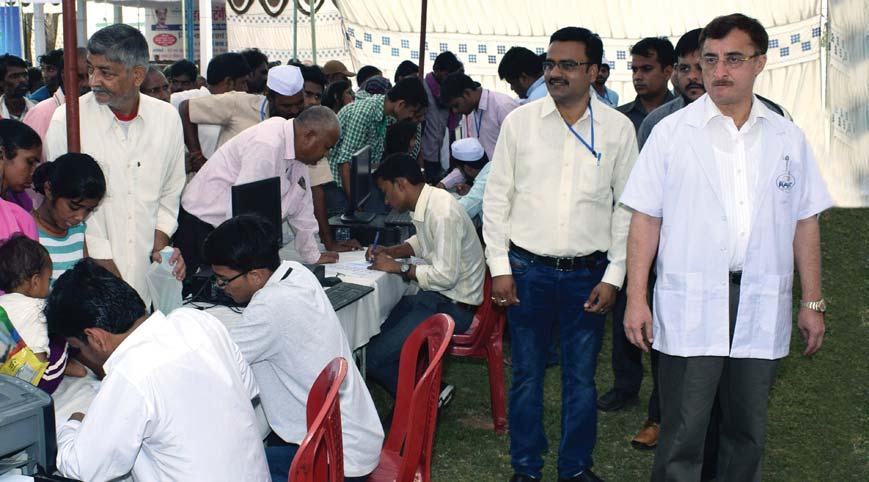
Most of them are farmers; their income level is so low that they cannot afford even the bus charge, let alone a hospital bill.
Mohit
Chatterjee President, RC Jabalpur.
Eighty-year-old Charan Lal Yadav from Devgawa hamlet gives a toothless smile as he comes out of an ENT surgeon’s chamber. He is happy that the doctors have advised treatment for his long-suffering eye and ear problems. “My eyes water continuously and I keep hearing a ringing sound in my ear. The doctors have given me medicines and asked me to visit them at the government hospital after a month,” he says.
Fifteen doctors from AIIMS and Max Hospitals, Delhi, and
65 doctors from the Jabalpur Government Medical College, Shalby, Mannulal and Global hospitals rendered their services. Most people were suffering from arthritis and dental issues. “The region has high fluoride content in the groundwater and this has an adverse effect on the villagers’ health,” says Chatterjee. Malnutrition among women and children is also quite high. Though the government has posted 14 doctors in anganwadis, 12 of them do not report for duty while two doctors
come occasionally, sign the register and leave, he points out.
Lack of medical facilities has resulted in childbirths at home and gynaecologists treated many women with complications due to nonclinical C-section deliveries.
Special buses transported people from their villages to the camp site. “With special arrangement with the RTO, we have given RAHAT cards to patients who require follow-up treatment at Jabalpur hospitals. They just have to show the card to the bus conductor and travel free,” says Chatterjee. Food was provided to all registrants and “that was the major pull.” Rotary Club of Jabalpur Sanskardhani took care of the registrations and Neelesh Awasti, the local MLA, also provided support with the logistics.
Around 75 patients were advised surgeries. “We’ll follow it up and see that it is completed within six months,” says the club president.
Rasheeda Bhagat
None of us can move forward if half of us are held back. So if you want a healthier, better world, you need to put women and girls at the centre of the agenda,” said Microsoft Founder Bill Gates at the Bill & Melinda Gates Foundation’s inaugural Goalkeepers event in New York last month. Former US President Barack Obama was there as also the Canadian Prime Minister Justin Trudeau, but the platform clearly belonged to women activists such as Nobel Peace laureates Malala Yousafzai and the Liberian peace activist Leymah Gbowee.
Along with Obama, they constituted three Nobel laureates at the event.
The occasion — Goalkeepers event — also marked the release of the Gates Foundation’s first annual report
tracking the progress made by the United Nations’ Sustainable Development Goals (SDGs).
The report showed that in the battle against infectious diseases and poverty, areas that have totally engaged the attention of the Gates Foundation, the picture is not so gloomy as screaming social media posts or alarming media reports indicate. So concluded the report titled “Goalkeepers: The Stories Behind the Data”. It was also announced that such a report will be brought out every year till 2030.
The findings point out that while progress has been made in areas such as infant mortality, maternal health, family planning and immunisation, the objective of achieving gender equality by 2030 — a goal shared by the UN’s
HeForShe campaign, requires a “more complex approach”.
Melinda Gates said that if she had to pick just one number to focus on, it would be the number of children who die every year before reaching the age of five. There was so much packed into that number. “Child mortality is a proxy for overall wellbeing; it’s also a leading indicator of progress (or the lack of it). And when you talk to mothers who have experienced the death of a child, you understand what that number means in human terms. What is more fundamental than keeping children alive so they can thrive and build the future,” she asked. And yet, it was positive to note that this number was coming down; from 11.2 million in 1990 to 5 million in 2016.
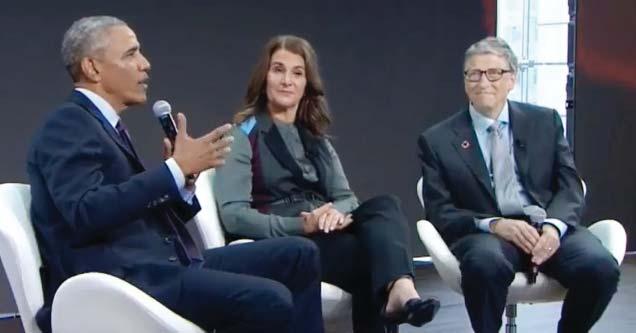
Progress has indeed been made in several areas, the report said. For eg, over the past 25 years, HIV deaths have reduced remarkably — from a high of 0.60 deaths per 1,000 people in the late 1990s to 0.25 in 2016. But, in the report, Bill Gates expressed concern that funding has slowed down to the extent that a population boom could mean a resurgence in HIV over the coming years, and this was a “scary prospect”.
President Barack Obama was there at the event and expressed his disapproval of the Republicans’ attempts to repeal his health care reforms and inflict “real human suffering” on American citizens. Canadian Prime Minister and self-proclaimed feminist Justin Trudeau, whose popularity through the world is increasing as he is being seen as a liberal and pluralist global leader, apart from being a staunch feminist, urged the audience to “break down stereotypes that hold women back.”
But some of the most compelling voices or the showstoppers at the event were Malala and Leymah. The session, titled “Still I Rise: The Power of Women’s Movements”, was moderated by Melinda Gates, who underlined the need to invest in women leaders who are working “on the frontline”, as gender equity was necessary to achieve progress on all the issues related to health and poverty. While Malala had bravely defied the Taliban in Pakistan and taken bullets on her young body, mainly on
When you talk to mothers who have experienced the death of a child, you understand what that number — annual deaths — means in human terms.
the face, while defending and advocating the right of girls to education, Leymah is a grassroots activist who is credited with helping to end the second Liberian civil war in 2003.
Leymah galvanised the audience when she spoke about a female volunteer who had tended to the same boy soldier who had killed her own child. “It’s an example of putting love over hate for the greater good, and demonstrates why women in Liberia need to bring some sense and sensibility to the process of attaining peace.”
Addressing the meet, Malala shared her experience in fighting for the

right of girls to go to school in Pakistan and observed, “If one girl with an education can change the world, what can 130 million do? They can grow economies, improve the air we breathe, cut in half the risk of violent conflicts, and advance public health. Over and over, studies show that girls are the answer to the most pressing problems.”
But the sad truth was, she noted, that none of the sustainable development goals being discussed on the occasion could be achieved “unless we educate girls.

There are no straight lines and no overnight solutions to getting 130 million girls in school. This is because of barriers to girls’ education, such as poverty, war, child marriage. But I believe we can do it. I believe we can see every girl in school in my lifetime, because I believe in local activists and champions.”
Both Malala and Leymah expressed the optimism that there were many young women like them across the world who were putting in heroic efforts and great work, but they needed to be identified, supported and encouraged.
Examples were given of Ria Sharma, who supports survivors of acid attacks in India; Marieme Jamme, a Senegalese survivor of human trafficking who has gone on to teach African women and girls to code; and Laura Ulloa, who works to reintegrate former Colombian guerrillas into mainstream society.
All these women were honoured at the Goalkeepers’ Global Goals Awards dinner.

Rasheeda Bhagat
Just one day and two nights in a historic city such as Budapest can only whet your appetite for more.
Never having tried an exotic destination overseas on a group tour, we booked the Cox and Kings 6 days 7 nights Eastern Europe tour at a mouth-watering Rs 75,000 per person, but with a lot of trepidation. The deal included not
only airfare, hotel accommodation, breakfast, dinner and sightseeing, but also Schengen visa — which itself comes to over Rs 5,500 and overseas travel insurance!
And when such a deal pops up on your computer screen for days, with a travel option that coincides with


Khatri (dog days) when the mercury goes to a real sizzling high in May in Chennai, it is even more attractive.
So even though some of the destinations — such as Vienna and Prague — we had done before, the prospect of visiting two new cities… Bratislava, the capital of Slovakia

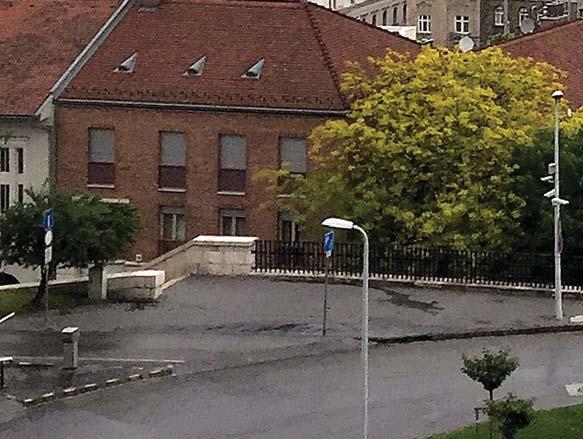

and Budapest, that of Hungary, was a good bait. So in the first week of May, we set off for Mumbai, from where the budget airline FlyDubai would take us to Bratislava, armed with very modest expectations.
Organised group tours are purely luck of the draw; if you end up with people in the group who are cribbers, habitual latecomers, loud mouthed, or pushy and aggressive, your entire trip can be ruined.

guide, was always able to round them up and get the coach moving with only modest delays.
The green and picturesque Budapest, Hungary’s capital, is made truly stunning by the bifurcation of the River Danube into two districts — Buda and Pest. Buda is more visually appealing as it has a mountainous terrain, whereas Pest is mostly on flat
ground. You can move from Buda to Pest and vice versa through the Chain Bridge, a suspension bridge which is an important landmark in the city, built in the nineteenth century. Our tour guide told us that the Chain Bridge was the first permanent bridge which crossed the Danube in Budapest. Before that people had to use a ferry or go as far as Vienna for the nearest bridge!
From a hot and humid Mumbai to a relatively cold Bratislava was the first bonus. The weather was perfect, and the group, a mixed one really, from Mumbai, Hyderabad, Chennai, Kochi, Kolkata, Ahmedabad and Surat, was a pleasant one. No spoilt, yelling kids, no pushy, arrogant people. Of course, the stragglers were there… but then Sameer, our tour
Organised group tours are purely luck of the draw; if you end up with people who are cribbers, habitual late comers, loud mouthed, or pushy and aggressive, your entire trip can be ruined.
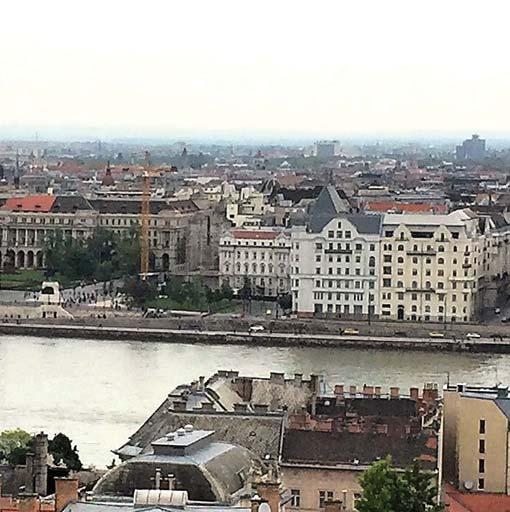

A funicular runs up the Castle Hill to Buda’s Old Town, where the Budapest History Museum is located. It captures for the tourists the city’s history from Roman times, but when you are in the city on a whirlwind tour — with just two nights and one day — as we were, there wasn’t time to visit it.
Mercifully, our tour in Budapest was planned well enough to be much
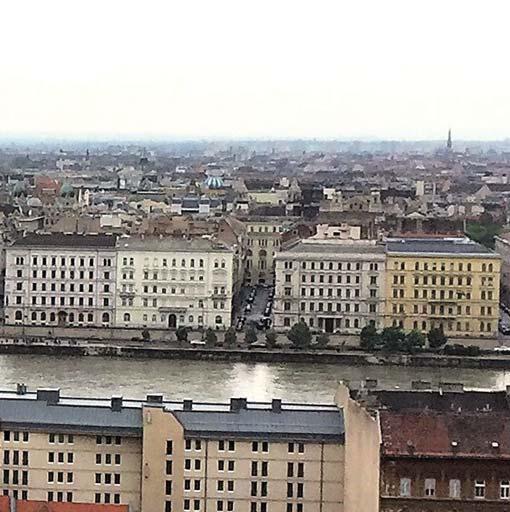
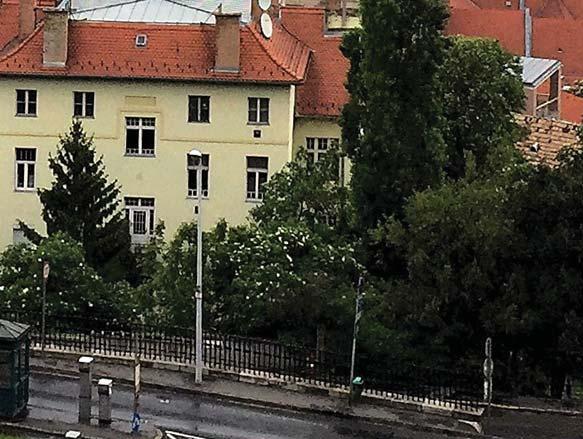
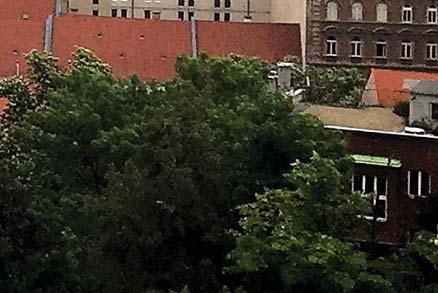




more than a “panoramic view of the city” — which translates to driving around the city in your coach, and coming home with loads of pictures but imbibing hardly anything of the city’s culture, ethos, what makes it special or unique, and above all, is its food.
St Stephen’s Basilica
This is one of Budapest’s most beautiful landmarks and like most iconic churches of Europe, dazzles you with its stunning architecture,
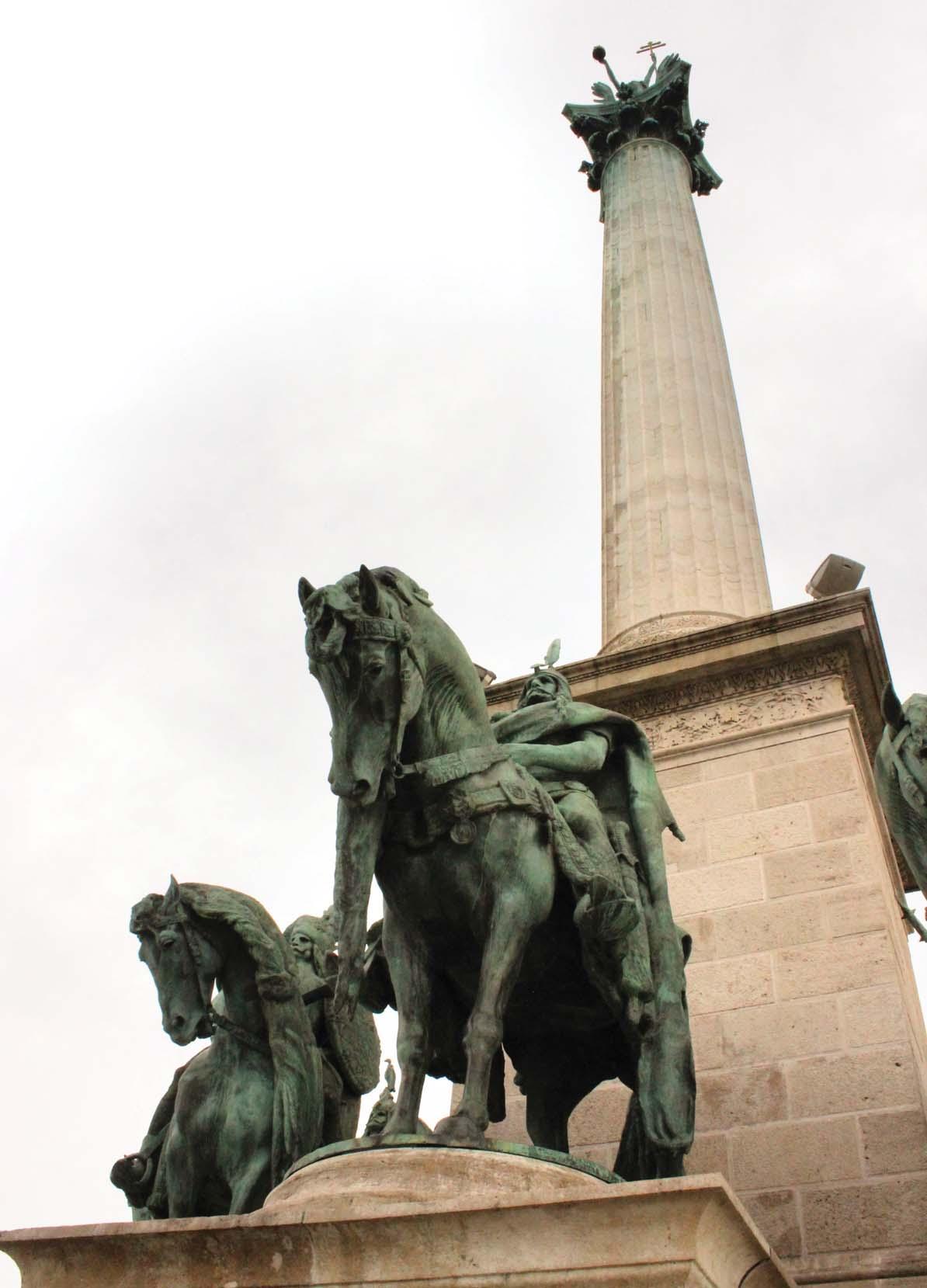
The central pillar at the Millennium Monument, on top of which stands Archangel Gabriel, holding the holy crown and the double cross of Christianity.
the stained-glass artwork, the exquisite frescoes and mosaics. About 150 different kinds of marble are said to have been used to decorate this basilica, which exudes such an aura of divinity, peace and calmness, that it compels you to take one of the benches and sit down to pray, irrespective of what your stated faith might be.
Situated on the Pest side of the city, it took 50 years to build and was completed in 1906, and the long years it took to build are said to account for its “eclectic
About 150 different kinds of marble are said to have been used to decorate the St Stephen’s Basilica.
style of the architecture”. It is named after King Stephen (975–1038), the first king of Hungary. From the top of the tower — which you can access for a fee — the view of the city is spectacular.
We drove past the imposing Parliament building, and were given time to spend at two attractive spots, the imposing and mammoth Hero’s Square and then a quaint spa facility, which has made us determined to return to Budapest to experience it at leisure. One entire day in a city like Budapest is just not enough, to soak in its magnificence.
Hero’s Square
This is easily one of the most imposing squares for which Europe is well known and the largest one in Budapest. It was put up in 1896 to mark the thousandth anniversary of Hungary. We are here on a balmy day in early May and the weather is perfect to walk around the place where a plethora of vendors are trying very hard to sell their wares, varying from women’s clothes and artificial jewellery to curios and artefacts to take back home. Adjacent to the Museum of Fine Arts,

the square has a striking Millennium Monument bang at the centre. And at the top of the central pillar stands Archangel Gabriel, holding the holy crown and the double cross of Christianity. Chieftains of the Magyar tribes and statues of kings and other important historical figures are erected on this monument, where clicking a picture is a must.
As recorded by Wikipedia, “when the monument was originally constructed, Hungary was part of the Austro-Hungarian Empire and thus the last five spaces for statues on the left of the colonnade were reserved
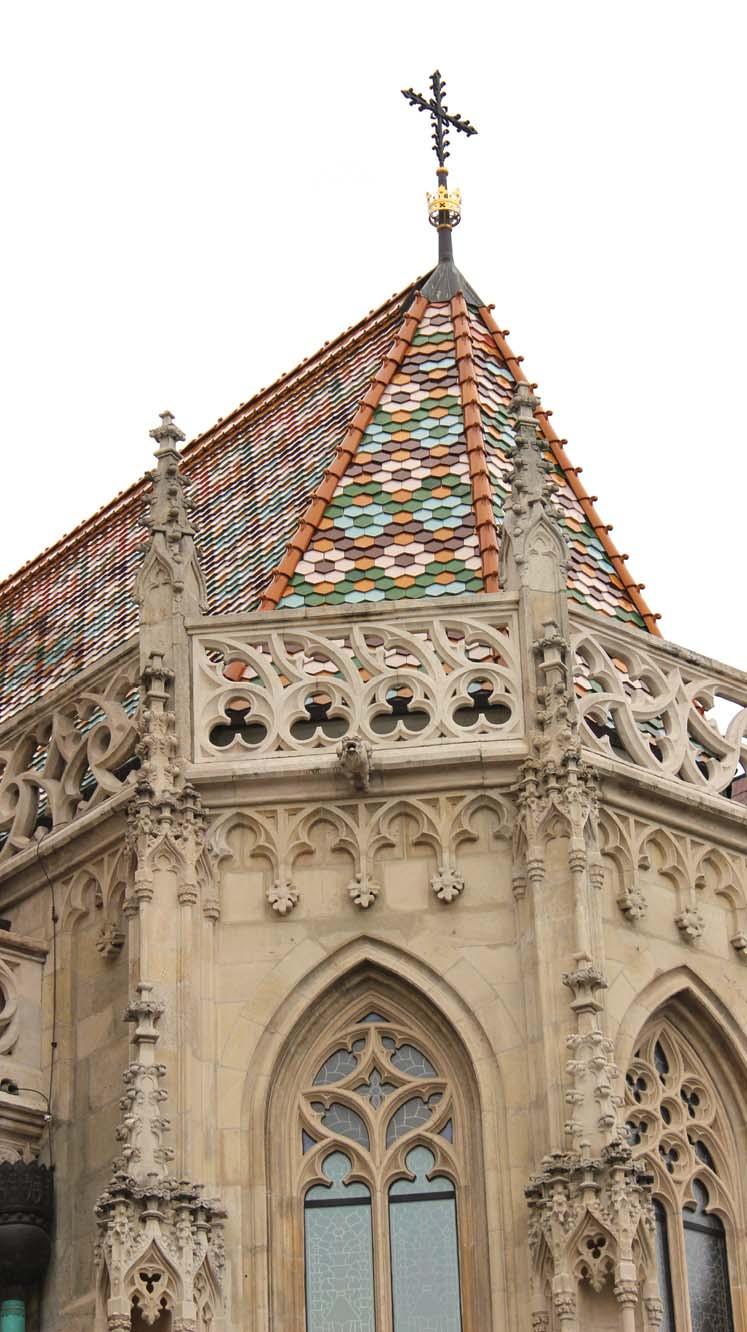
for members of the ruling Habsburg dynasty.” But later the Habsburg emperors were replaced with Hungarian freedom fighters when the monument was rebuilt after World War II. In 1989, a huge crowd of about 250,000 gathered at the square for the reburial of Imre Nagy, former Prime Minister of Hungary, who was executed in 1958.
Like in any city of the world, do beware of tricksters while in the Hungarian capital. Our guide cautioned us not to enter into any bets as she walked us to a picturesque spot on the
Like in any city of the world, do beware of tricksters while in the Hungarian capital.
Buda part of the city which provides a glorious view of Pest, particularly the impressive Parliament building. There, in a round enclosure was operating a gang of thugs; they invite you to place a nail inside several folds of a belt. You had to bet if the nail would be within or outside a fold when the belt was unfolded. If you won, you got three times what you had betted. It was basically a sleight of hand; when his accomplices bet Euros 20 or 50, they always won, trebling their money. But when an unsuspecting tourist did so, he won maybe the first round or two, but lost subsequently as he increased the bet. Many people in our group, especially those from Mumbai, were fascinated, but luckily decided to hold on to their purses!
But for a tourist like me, for whom a daily swim is like a slice of paradise, the most memorable part of our trip was the visit to one of the public baths, or spas, for which Budapest is famous. We were taken to one named the Bodyrelax Terapiak (studio). There was a long queue to get inside,
A unique feature of Budapest is that it sits on a patchwork of about 125 thermal springs and visiting one of these baths is almost a regular ritual for many of its residents.
What is a trip to Hungary without digging into its world famous beef goulash, considered a national symbol? The goulash is basically a stew of meat and vegetables, seasoned with paprika and other spices. Originating from medieval times, this is a popular meal all across Central Europe. I have tasted mouth-watering beef goulash in Vienna and Salsburg too, but to dig into it in its place of origin was a special treat. The meat was soft, succulent, juicy, and the dish was surprisingly spicy, and reminded me of the lamb dish or that we Bohri Muslims make on festive occasions such as Eid, marriages, etc. The only thing that
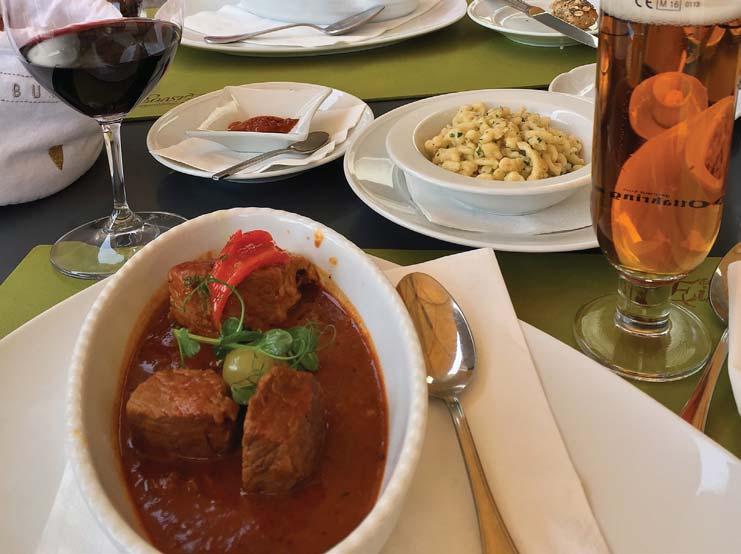
Hungarian goulash (above) and apple strudel (below)

was missing was slices of boiled eggs and (fried onions) ladled into the dish.
The Hungarian goulash has an interesting history that dates back to the 9th century when shepherds used to make and consume such stews. In those days, the meat, flavoured by spices, was dried with the help of the sun and packed into bags produced from the sheep’s stomach. They needed to add only water to this to convert it into a meal.
In Budapest, you also have to try their apple strudel, a pastry that is
associated more with Vienna, and the rest of Austria, but has emerged from the era of the Austro Hungarian empire. Basically a layered pastry with an aromatic filling of cooked apples, the USP of this delicacy lies in the way the dough is rolled — not too thick, nor too thin. The one I tried had a very soft and flavourful apple filling; the outer layers were both flaky and soft and it was so delicious that you simply had to finish the rather generous portion that is usually served in restaurants… of course with a dollop of cream! Sinfulness at its best!
but the tour operator managed to swing us past in a minute.
A unique feature of Budapest is that it sits on a patchwork of about 125 thermal springs and visiting one of these baths is almost a regular or weekly ritual for many of its residents. For tourists, of course, this is a major attraction. The plethora of baths — which are essentially spruced up, beautified and well-maintained pools of water, the temperature of which is maintained from warm to hot — is said to contain several healing and soothing minerals.
So visiting a Hungarian bath, a legacy of Roman times and a hangover certainly from its Turkish occupation, is a huge attraction for tourists. Apparently, those with medical problems such as rheumatic arthritis, stiff joints or skin problems can benefit immensely from swimming in these waters.
At most of these baths, some of which are spic and span, luxurious spa facilities, trained masseuses are available to give you massages. Many of these facilities come equipped with steam rooms, saunas,

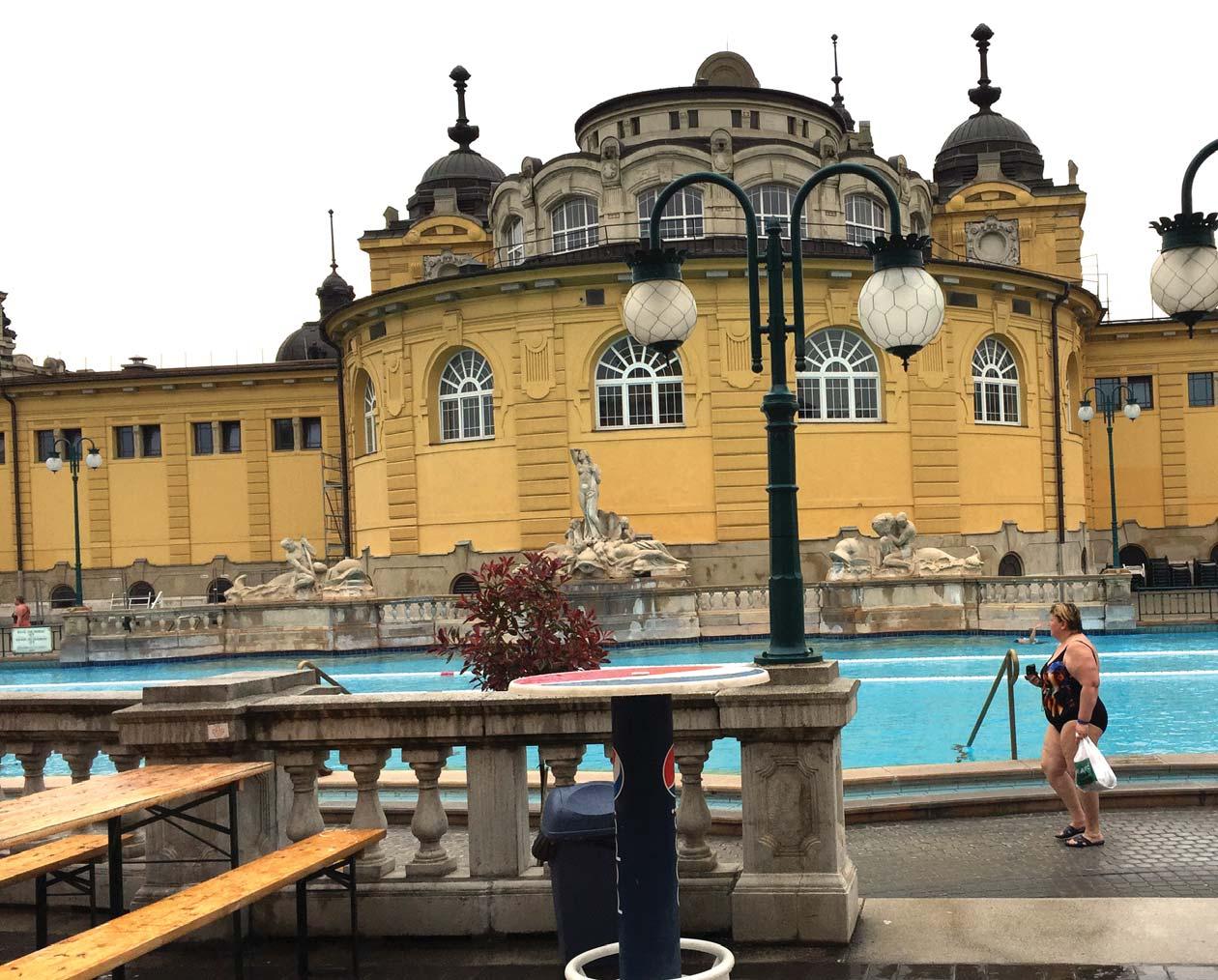
Visiting a Hungarian bath, a legacy of Roman times and a hangover certainly from its Turkish occupation, is a huge attraction for tourists.


Each
place I have travelled to has given me at least one compelling reason to return.
ice-cold plunge pools and whirlpools designed to treat various ailments.
Sophia, our local guide, is 55 but barely looks 40, tells us the reason why she did not take a seat for most of the time in the coach as the vehicle made its way across Budapest. On a recent trekking trip to the Himalayas in India, she had a bad fall which caused a grievous injury to her back. “When I returned home to Budapest, I could barely walk or sit down. But I have been swimming regularly in one of these thermal baths, where the water is not only warm but filled with healing minerals, for the last two weeks and I am
getting better every day with my muscles and stiff joints healing slowly.” Relief from pain, swellings, loosening of stiff joints, etc are a given at these baths, she tells me.
We are not prepared for a swim, and haven’t been told to bring our costumes, as there isn’t enough time to experience the bath, Sameer tells us sheepishly. But the clear deep blue waters look so tempting, that anybody going to Budapest on a leisurely visit must have this experience.
Each magic place I have travelled to has given me at least one compelling reason to return; in Santorini in Greece it was the most spectacular sunset I had ever seen; in Istanbul it was the magic of the Bospherous river; in Budapest it will be a leisurely visit to its thermal pools. They hold out a promise of relaxation, therapy, massage and much more.
Pictures by Rasheeda Bhagat and Pervez Bhagat
Designed by Krishnapratheesh
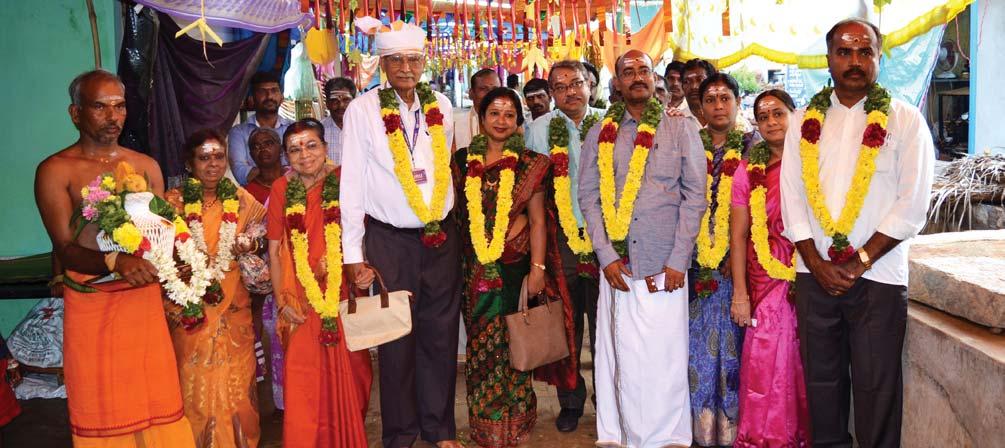
Anew colony was born at Pudur Palapatti village near Salem in 2000 when Rotary built 32 houses under a low-cost housing project. This is a tribal hamlet and the people were engaged in gathering firewood and honey from the nearby hills.
The houses were sponsored by RC Attur, District 2982, in partnership with four clubs of Japan — RCs Sendaikamuri, D 2810, Sappora West
Hokkaiko and Masao Marimoto, D 2510 and Naozo Matsuda, D 2690 — under a matching grant. Later, in 2009, another house was added to the colony when a four-member Australian team led by Jenney Horton visited the village for a Polio immunisation programme.
More recently, PDG P V Purushothaman visited the village, along with few Rotarians, and was happy to see that the houses were maintained well
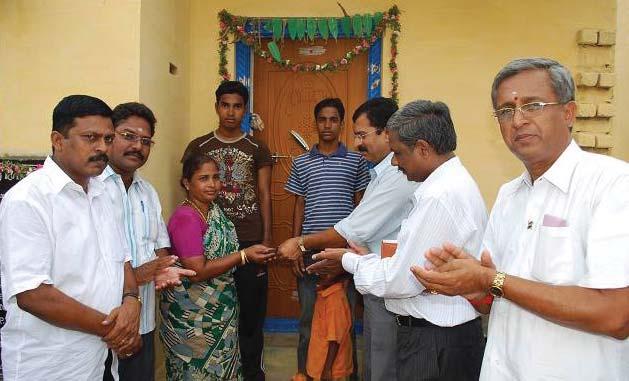
and “more importantly, the colony was clean. In these 17 years, their lives have changed for the better. The men now earn their livelihood through contract jobs and children are going to school regularly,” he said.
But the residents wanted a Ganesh temple for daily worship and the Rotarians obliged, and the temple was constructed at a cost of Rs 7 lakh. Contributions poured in from several past governors and Rotarians from across the country, including PRID Y P Das, DG Dharmesh Patel, DGE Nirmal Prakash and DGN A K Natesan. Each household and members of RC Attur also pitched in with funds. Over 500 people from in and around the village took part in a grand consecration of the temple in September.
A vocational centre is being set up at the colony to train women and youth in tailoring, computers, candlemaking, agriculture and other profitable activities. “We are also in touch with the Agriculture Department to orient villagers in modern farming techniques,” said Purushothaman.
Kiran Zehra
After his return from the medical mission to Ogun, Nigeria, organised by District 3020, Rtn Sanjay Mucherla, a dental surgeon, learnt that there was a great need for medical equipment and training in African hospitals.
Dr Varahalu Basava, a past governor and Chairman of the medical mission, said, “not only was PRIP Raja Saboo interested in knowing about the mission, he also helped us identify our international partners from D 9110 in Nigeria and D 3650 in South Korea. We owe him and The Rotary Foundation a big thanks for helping us get this Global Grant.”
Nigeria’s State Commissioner for Health Dr Babatunde Ipaye inaugurated the eight-day health camp at the Olabisi Onabanjo University Teaching Hospital (OOUTH), Ogun, on May 20. Over 400 patients were screened for various ailments and

Above: Children awaiting treatment in the hospital.
Below: The team of Indian doctors who were part of the medical mission to Ogun.

150 patients had to undergo surgery. A team of seven doctors from India conducted the camp. The team presented laparoscopic equipment worth Rs 19 lakh and other surgical equipment worth Rs 6 lakh to OOUTH.
Recalling a three-year-old child operated for umbilical hernia, Dr Basava said, “The doctors were shocked to find such poor facilities for surgery. A fractured bone hadn’t healed, some patients suffered from large keloids. Four-to eight-year-old children in particular suffered from undescended testes and hernia. Hypospadias, amounting to one-third of the surgeries, were performed on children.” The camp was a boon for those who could not afford the huge hospital bills or travel abroad for treatment.

Books are great to receive. It’s even more thrilling to present them to others.
The other day, my sister who lives in London and I were on the phone, when suddenly, out of the blue, she said, “You know, you got me Winnie-the-Pooh from Shimla.”
Sandhya Rao
remember ducking into a bookshop, let alone buying a book. Where did the money come from? Who had any money those days? Certainly not a teenager on an excursion.
“I remember,” Junjun said. “You went to Shimla and you brought Winnie-the-Pooh for me from there!” She must have been about 8 or 9. We chuckled: clearly, it was a case of the elder ‘educating’ the younger!
(in its 27th edition) by Dell in 1982 and presented to me in 1983. Junjun’s copy is much older.
At this juncture (oh, what a personality-laden word this is!) I must warn you that you will regularly bump into friends and family in this column for what are books but friends and family?









The gears shifted and a memory fell in place. I must have been about 14 or 15. It was a school trip, most of it pretty much of a blur. But I do recall walking up and down the mall in Shimla. There was a clock tower… or was it somewhere else? I certainly don’t
























You know how you never find the one thing you’re looking for? That one piece of paper, that one blouse, that one tie, and all those pens beside the telephone… well, I haven’t been able to find that particular copy of the book, but what turned up was another copy, a present from my friend Aditi, published



























Anyway, remembering the book led to looking for the book, and once found, led to reading it, as Maria recommends in The Sound of Music, “from the very beginning”. The first paragraph of the Introduction explains the Pooh part.










The second paragraph goes like this: “You can’t be in London for long without going to the Zoo. There are some people who begin the Zoo at the beginning, called WAYIN (that’s the






























Maria way, you know), and walk as quickly as they can past every cage until they get to the one called WAYOUT, but the nicest people go straight to the animal they love the most, and stay there. So when Christopher Robin (Milne’s son in real life… A A Milne wrote the books in the series) goes to the Zoo, he goes to where the Polar Bears are, and he whispers something to the third keeper from the left, and doors are unlocked, and we wander through dark passages and up steep stairs, until at last we come to the special cage, and the cage is opened, and out trots something brown and furry, and with a happy cry of ‘Oh, Bear!’ Christopher Robin rushes into its arms. Now this

It’s all right to forget because when you try to remember what you’ve forgotten, you always, always end up remembering something else.
bear’s name is Winnie, which shows what a good name for bears it is, but the funny thing is that we can’t remember whether Winnie is called after Pooh, or Pooh after Winnie. We did know once, but we have forgotten…”
So you see, it appears that it’s all right to forget because when you try to remember what you’ve forgotten, you always, always end up remembering something else. Like, for instance, the fact that when director Danny Boyle (and his team) won all those Oscars for Slumdog Millionaire, he jumped up and down on the stage like Tigger because he had promised his kids that he would do so. Tigger, for those who don’t remember, is friends with Christopher Robin, Winnie the Pooh, Eeyore and all those wonderful characters who inhabit the world of Winnie-the-Pooh
My favourite thing to do is buy multiple copies of books, and have them signed specifically for special people.
shooting prowess and his Olympic gold, rifle-shooting isn’t exactly an adrenaline-pumper. I didn’t even know he had a book until I was involved in a children’s book project featuring Indians at the Olympics, supported by Bindra’s Foundation. Even so, there was no reason to read his book — except for that insatiable thirst inside. Since then it’s on my recommended reading list for all.
























Incidentally, Slumdog Millionaire is based on a book called Q&A by Vikas Swarup. He is currently India’s High Commissioner to Canada. And I got Q&A as a 50th birthday present! On my 12th birthday, my cousin who is actually an aunt, gifted me Gone with the Wind by Margaret Mitchell, which became an equally famous film starring Vivien Leigh and Clark Gable. At the end of the film, Rhett Butler demolishes Scarlett O’Hara with the words, “Frankly my dear, I don’t give a damn”, and walks out of the door. This line has acquired iconic status in film circles, but does it feature in the book? That’s something to check on.
Choosing birthday gifts has always been an activity of great joy, the only question being which book, what if the recipient already had the book. But that’s these days: more liquidity means more people are able to buy themselves more things, even books. Back then, say some 20 years back, it wasn’t so. Choosing a book wasn’t such a major decision-making process, and certainly not for my son Tejas’s friends on their birthdays. He was and remains a great guzzler of books, but even as a little fellow he realised that not everybody else was.


My favourite thing to do is buy multiple copies of books, the great ones, the carefully chosen ones, sometimes even popular ones, and have them signed specifically for special people. That’s how books such as Em and the Big Hoom by Jerry Pinto, No God in Sight by Altaf Tyrewala, and A Shot at History by Abhinav Bindra and Rohit Brijnath, among others, have found their way to some homes. This is Big Love. And Big Love turns up in the strangest ways. For instance, I would possibly never have picked up A Shot at History. Although I salute Bindra for his
“Amma, don’t want a book, s/he doesn’t read!” he would wail, and I would go, “But s/he should!” and he would shrug his little shoulders despondently. Looking back, I now see how rotten the poor chap must have felt when the birthday child squealed and gasped unwrapping each present and then, quite likely, pulled a face when it came to the book. Still, I shall stick with books in the hope that someday they will win the reluctant readers over. Every time this happens, a little star twinkles ever brighter.
The columnist is a children’s writer and senior journalist.
Designed by Krishnapratheesh
Rasheeda Bhagat and Jaishree
Dr Zamin Hussain
General Physician, RC Sonkatch, D 3040
This governor is passionate about global grants and has served eight years as the district grants committee chair and two consecutive years as club president. Zamin Hussain became a Rotarian in 1988 soon after completing MBBS from GRMC, Gwalior. “The first ten years I enjoyed Rotary only for the fellowship but today my whole life revolves around it. I’m everything because of Rotary,” he says.
As grants committee chair he had effected 22 matching grants for the district. “All the grants were for providing furniture to schools; 1,000 schools in 90 villages benefitted through our projects, so much so whenever a school needs something, the management is confident that ‘Rotarywale’ will take care of it.” The secret behind the success of these matching grants, he says, is in being transparent with the international partners, prompt l y replyi ng to mails wi t h correct d ata.
want to visit. This gives them the confidence that we do not manipulate with the grant money.”
Hussain strongly believes that Rotarians should strictly adhere to Rotary ethics. “Reforms should flow from the top. When leaders advise that there should be no election campaigning or any such malpractices, they should also follow that. Sadly, Rotarians are bigger politicians than politicians themselves,” he says. But despite these “small drawbacks” he loves Rotary and is hopeful that things will once again shine bright.
Service projects are a big boon and if done rightly, they can attract more members. He has asked his clubs to minimise unproductive expenses and channelise the money into projects. “No printing photographs of the president or governor in the banners. What is happening is that most of the time the leaders’ pictures are prominent and the Rotary Wheel is relegated to a corner!”
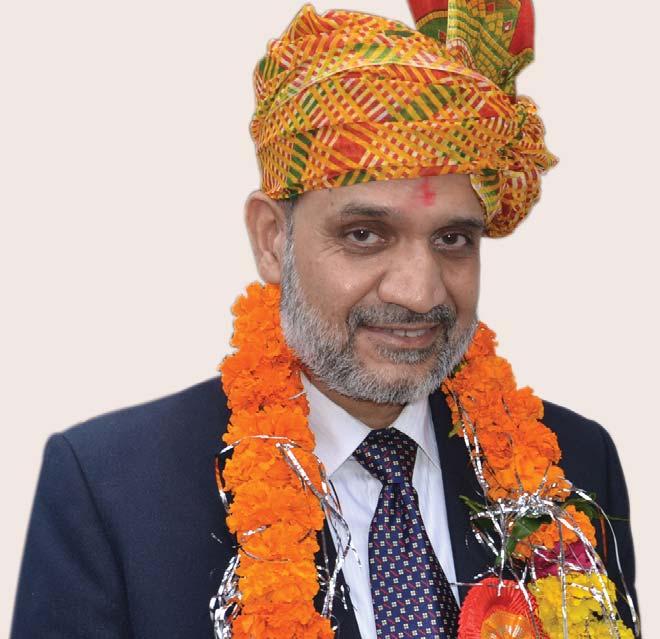




“ W hen our matc hi n g pa rtner v i s i ts our di str i ct, we give them the list of schools w here we have done the pro j ects and le t them choose the si te t h ey
Also, he does not believe in people favouring leaders. “Last year when a Rotarian came up and said, “I’ll donate this much during your year,” I said, “Why wait for my year? Why not now? People’s sufferings can’t wait. Your timely donation will help people when it is most needed.”
The district has 2,100 Rotarians. “The membership status is rather grave but I will improve it by 20 per cent,” he says. His target for TRF contribution is $300,000 which is difficult to raise as most of the clubs are in tribal areas and people will “give to a masjid or a temple but will think twice to give to the Foundation,” he says.
He is encouraging his team to join hands with the Lions in doing service projects and has invited the Lions DG for his District Assembly. “He has also expressed interest to work together,” says Hussain.
He has never forgotten his father’s words: “Live frugally but donate generously for the downtrodden.” He charges just Rs 50 from his patients and treats about 100 patients daily. “They are all very poor and can’t afford huge medical bills,” he adds.


His main priority is of course to be the core theme of Rotary — Service Above Self. But within this parameter, DG Prafull Sharma will concentrate his energy on water. “I want to concentrate on the water crisis in rural areas. Of course, urban areas of India also face water shortage, but we urbanites often waste a lot of water without a thought for others. If we just take a little extra care and learn to conserve water, our brothers and sisters from rural areas, particularly our farmers, who are facing so much distress, will benefit,” he says earnestly.
Sharma’s second thrust area this year is renewable energy; once again he wants to spread the message of thoughtlessness that plagues most of urban India. “The maximum energy in our State is consumed in Mumbai and other big cities, and here too, we waste a lot of energy without a thought for areas that face so much power shortage and power cuts,” he rues.
His third area of focus is skill development. “In a metro like Mumbai we don’t get plumbers, electricians, AC mechanics, etc. So we are working on skill development too.”
A welcome resolve you hear from this DG is the magic word “continuity”. All ongoing service projects in his district are being continued by him. “My predecessor Gopal Mandhania has started paediatric heart surgery and diabetes control and management. Both are excellent projects and they are being continued. I have decided that all the existing project which are benefitting the community will be continued without any prejudice. In fact, the incoming governor and the DGN have committed that they will continue the ongoing projects,” he adds.
This DG is focusing his energy on increasing membership, and his target during the year is a 15 per cent increase, “of which I want to ensure that five per cent, or one-third new members brought in are women and young people… under 45.” His other big area of focus is the health care sector, and with an eye on improving the medical care available to the community he has brought out a mobile app named HOPE — Hospital Project and Equipment. This is providing infrastructure support to clinical health care centres, public hospitals, taluk general hospitals and medical college hospitals. It also supports the vertical of the Kerala Chief Minister called Ardram (Mercy). “The State government is striving to improve health care facilities in existing public health and other health care centres, and we are supporting this initiative. Under HOPE, we are giving out health care facilities ranging from bedsheets to dialysis machines,” says DG Suresh Mathew.
He has also tied up with the Kidney Federation of India and under this partnership, a bus fully equipped with medical diagnostics and other facilities is going to villages and conducting chronic kidney disease awareness and detection drives.
Next, he wants to lend full support of his district to the RI President Ian Riseley’s push to green the world. “Unfortunately, while the green initiative of Rotary is known to the upper and the upper-middle classes, the lower classes know nothing about it. Would you believe it, there is quite a percentage of people in my district who call Rotary ‘Lottery’! So just to create awareness in the community and also enhance Rotary’s public image, we have come out with a green initiative called REAP — Rotary Empowerment of Agricultural Production.” Also, under another green initiative called Planet Tree, a total of 1.5 lakh saplings are being sown. Another environmental initiative he has started is called ‘safe sound’ and under this Rotarians of the district are working to prevent or reduce noise pollution.
RC Trivandrum Central, D 3211
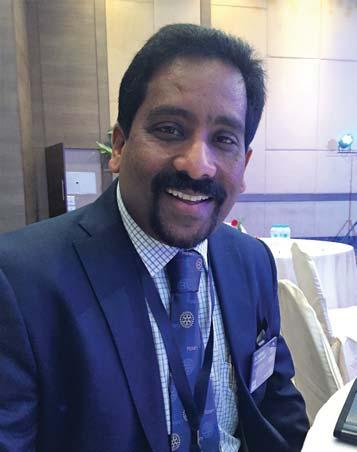
He joined Rotary in 1990 as a charter member “to make friends and soon found it wonderful for personal growth,” says G N Prakash, who cherishes his assignment as GSE team leader for five youngsters to eastern Canada. “It was a fantastic experience, building new relationships and encouraging cultural exchanges. His spouse, Vijaya M S, is also a Rotarian and son, a Rotaractor, “has got an invite to join RC Bangalore.”
His focus is to provide e-learning facilities and WinS elements to government schools. All 80 clubs of the district are assigned a school each to be transformed into a Happy School. Taking cue from RI President Ian Riseley’s call for a green earth, his target is to plant three lakh saplings. It is achievable as there are 3,000 Rotarians in the district, he adds.
However, Prakash is worried about meeting his TRF goal of $350,000. Most of the clubs are in the rural belt and “already Rotarians spend Rs 30,000 towards dues, the district seminar and conference. So not many are enthusiastic about giving to TRF,” he explains.
But he is confident of membership growth, with a plan to induct 500 new members, mostly youth and women. He has chartered four new clubs out of 11 that he has on his list.
Automobile Accessories Retailer
RC Shimoga Central, D 3182
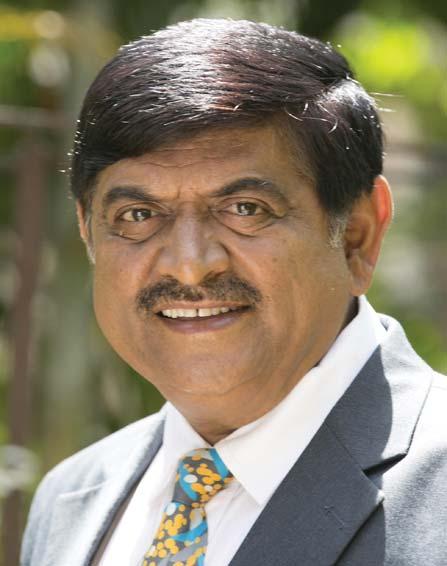

Sunil Saraf
Hotelier, RC Tezpur, D 3240
Inever thought I’ll become a district governor. I failed in 2014 when I first filed my nomination,” says Sunil Saraf, who is a Rotarian since 1988 and was a Rotaractor since the age of 20. His tenure has been “hectic as I cover one of the largest geographical areas in the world; the district includes seven NE States, Sikkim and parts of Bengal. I need to travel at least 4–5 hours to reach a club and take all modes of transport — train, road and flight. Nevertheless, I enjoy every minute of my assignment.”
His main agenda is to breathe life into the weak clubs “that are in the ICU”. There are 12–13 such clubs in Bengal and Assam. “They know almost nothing about Rotary. When I visited a couple of them, the members were overjoyed and energised to do community projects,” he says.
Saraf wants to add 600 new members to the existing 3,000 and 150 new Rotarians have been inducted so far. He is working on setting up Rotary clubs in 12 new unrepresented areas. “Places such as Coochbihar, Bagdogra and Bokhakhat are growing towns; Rotary should have been there,” he says, listing out some of the areas.
His TRF contribution target is $400,000. He plans to set up dialysis centres in Jorhat, Siliguri, Durgapur and Malda, a blood bank in Raigunj and upgrade 58 government schools with the involvement of 58 Rotary clubs. “I have a global grant of $70,000 for the project,” he says.
Ask Vidya’s husband how he feels about owning a toilet and he says, “Madam yeh sab toh ladies log ka mamla hai… you please talk to my wife.” But Vidya seems quite happy that she will not have to “drink less water or eat less, and most importantly, wait for the dark to relieve ourselves. Thank you, Rotary,” she says.
For Vidya and other women of Indri, a village in Haryana about 65 kms from Delhi, owning a toilet is more prestigious than owning a television. “Ab kheton mein lota utha kar nahi jana padega (We no longer have to go to the fields),” says another beneficiary of the Rotary toilet.
RC Delhi Midwest, D 3011, in association with Sulabh Sanitation Mission Foundation, RC Denver, D 5450, USA, and TRF have built 20 toilets in Indri. Ashok Jain, the Global Grant Project Coordinator, explains that the MoU with Sulabh includes educating the villagers and creating awareness on personal hygiene. This is done periodically with lectures and demonstrations at the village community centre and school.
Personal hygiene awareness is very much needed, he says, because “it
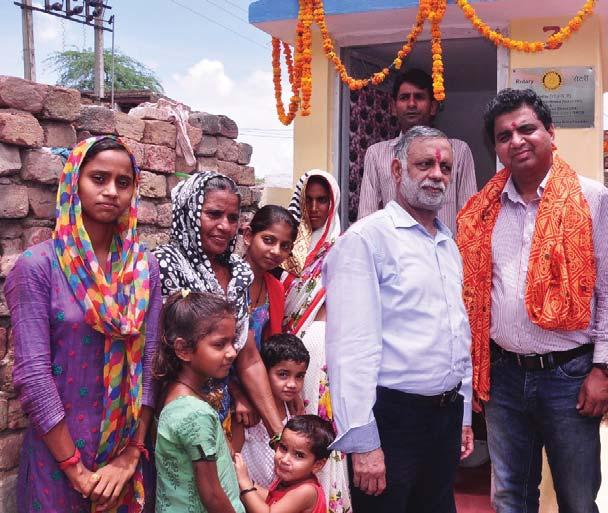
has become a habit for the villagers to defecate in the open and unfortunately some are comfortable doing that.” Lalita, another beneficiary, says, “We were so used to going to the fields.”
But her 12-year-old son insisted on having a toilet built at home because “there is one in his school. We did not have enough money to build a toilet. and always thought toilet ki kya zaroorat hai (why do we need a toilet)?”
help from Rotarians William Korstad and Nanda, the global grant came through.
We did not have enough money to build a toilet. And we always thought toilet ki kya zarurat hai (why do we need a toilet)?
Lalita, a beneficiary
Nothing happens overnight, neither creating awareness, nor building a toilet, says Jain. In 2015–16, when he was the club president, he wanted to build the toilets and to his luck Rtn Ved Nanda, member of RC Denver, was invited as guest speaker at one of the club meetings. “He suggested that we plan a global grant project in collaboration with his club.” With
A partnership with Sulabh was established and after an extensive survey “we decided on Indri, as this village had a low average income, compared to its neighbouring villages.” Under this grant it was decided to build toilets in 65 households, of which 20 toilets have been completed and handed over to the people in July in the presence of DRFC Sushil Khurana.
Jain recalls how he found that one of the toilets was being used as a dustbin. “It was disappointing. Then we talked to the villagers and told them sternly not to do that.” The club members keep visiting the village to monitor the toilet usage, and will do so till toilet usage becomes a habit.
With just 11 confirmed polio cases so far in 2017, the world is on the brink of eradicating polio, a vaccine-preventable disease that once paralysed hundreds of thousands of children each year.
To recognise this historic progress, Rotary clubs worldwide hosted events in conjunction with Rotary International’s fifth annual World Polio Day celebration on October 24. This year, the event was co-hosted by Rotary and the Bill & Melinda Gates Foundation at the foundation’s headquarters in Seattle. The programme featured an update on the global fight to end polio and an array of guest speakers, celebrities and public health experts. The event was livestreamed at endpolio. org/worldpolioday.
“Rotary and its partners are closer than ever to eradicating polio,” said Michael K McGovern, Chair of Rotary’s International PolioPlus Committee, which leads the organisation’s polio eradication efforts. “World Polio Day is the ideal opportunity to celebrate our successes, raise public awareness and talk about what is needed to end this paralysing disease for good.”
Without full funding and political commitment to eradication, the disease could return to countries that are now polio-free and put children everywhere at risk. Rotary is giving $49.5 million in grants to support immunisation and surveillance activities led by the Global Polio Eradication Initiative. Some of the funds will support efforts to end polio in the three countries where polio remains endemic: Afghanistan ($9.32 million), Pakistan ($8.94 million) and Nigeria ($7.71 million). Further funding will support efforts to keep six vulnerable countries

polio-free: Chad ($2.37 million), the Democratic Republic of Congo ($4.5 million), Guinea ($961,000), Somalia ($1.62 million), South Sudan ($3.77 million) and Sudan ($2.56 million). An additional $7.74 million will go toward surveillance activities in Africa and the Eastern Mediterranean region.
In a show of solidarity and to raise awareness and funds for polio eradication, Rotary clubs around the globe hosted nearly 1,900 events for World Polio Day.
“To protect all children from polio, world governments and donors must see through their commitments to fund critical work and support rigorous disease surveillance in both endemic and at-risk polio-free countries,” said McGovern. Rotary has committed to raising $150 million over the next three years, which will be matched 2-to-1 by the Bill & Melinda Gates
Foundation, yielding $450 million for polio eradication activities, including immunisation and surveillance.
Rotary started its polio eradication programme PolioPlus in 1985, and in 1988 became a partner in the Global Polio Eradication Initiative, along with WHO, UNICEF and the US Centers for Disease Control and Prevention. The Bill & Melinda Gates Foundation later became a partner, too. Since the initiative was launched, the incidence of polio has plummeted by more than 99.9 per cent, from about 350,000 cases in 1988 to just 37 cases in 2016. Rotary has contributed a total of more than $1.7 billion — including matching funds from the Gates Foundation — and countless volunteer hours to protect more than 2.5 billion children in 122 countries from polio.
The road to eradicating polio has been a long and difficult one, with Rotary leading the fight since 1985. Going from nearly 350,000 cases in 1988 to just 10 so far this year has required time, money, dedication and innovation from thousands of people who are working to end the disease. Here are five things you may not know about the fight to end polio:
1. Ice cream factories in Syria are helping by freezing the ice packs that health workers use to keep the polio vaccine cold during the immunisation campaigns.

In Pakistan, over 21,000 vaccinators, 83 per cent of whom are women, are achieving the highest immunisation coverage rates in the country’s history.
2. Celebrities have become ambassadors in our fight to end the disease. They include WWE wrestling superstar John Cena, actress Kristen Bell, actionmovie star Jackie Chan, golf legend Jack Nicklaus, Grammy Award-winning singers Angelique Kidjo and Ziggy Marley, Nobel Peace Prize laureate Desmond Tutu, anthropologist Dr Jane Goodall, co-founder of the Bill & Melinda Gates Foundation Bill Gates, and worldrenowned violinist and polio survivor Itzhak Perlman.
3. Health workers and Rotary volunteers have climbed mountains, crossed deserts and sailed to remote islands, risking their lives to vaccinate children against this disease. Rotary has funded more than 1,500 motorbikes and 6,700 other vehicles, as well as 17 boats, to make those journeys. Vaccinators have even travelled on the backs of elephants, donkeys, and camels to immunise children in remote areas.
4. In Pakistan, the polio programme
emphasises hiring local women vaccinators and monitors. More than 21,000 vaccinators, 83 per cent of whom are women, are achieving the highest immunisation coverage rates in the country’s history.
5. Thanks to the efforts of Rotary and its partners, more than 16 million people who otherwise might have been paralysed are walking today. In all, more than 2.5 billion children have been vaccinated since 1988.
© www.endpolio.org

How many of us know that textiles are intertwined with the history of the British rule in India?
Indian textiles have created turning points in history. Gandhiji cremated foreign fabrics in an act of defiance, collecting them from sophisticated Indians who wanted to be on the same page as the Britishers. It drained the British coffers and marked the beginning of the end of colonial rule in India.
Again, it was handlooms that moved Francis Day into choosing Madras as the new British settlement. He was impressed with Madras “being the only place for paintings, and a great store of longcloth and




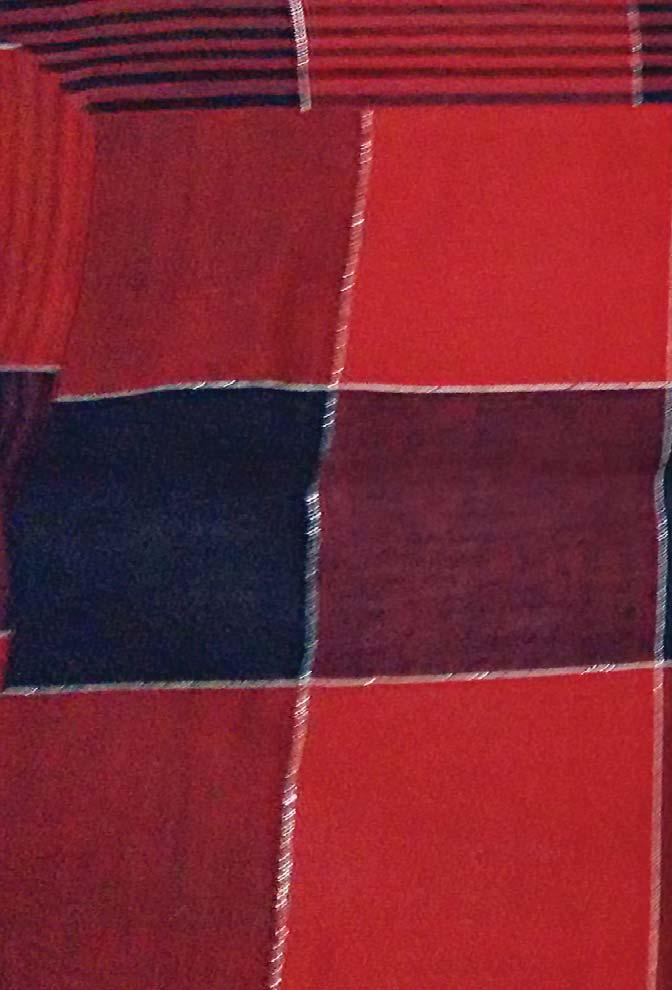
Morris.” He was of course referring to hand block-printed chintz, and Morris was blue cotton cloth. On his return from a tour of the Coromandel Coast, he was showed around by the local Naik, Damarla Venkatadri. Day met merchants, painters and weavers, examined a variety of fabrics and what impressed him was the price, as the cloth was 15 per cent cheaper than that at Armagaon, about 35 miles north of Pulicat.
The East India Company wished to set up a factory on the East Coast, and it had zeroed in on Armagaon. Since the calico, which was in great demand, was locally produced and of poor quality, the port could not be used for trade purposes and a new



settlement had to be found. With the appreciable price difference of calicoes at Madraspatnam and excellent trade prospects, Francis Day decided on the new settlement — Madraspatnam. The rest is history, as Madras became an important port in colonial India. Madras was founded not for spices and gold but for cloth. Madras cotton was exported to Africa and the Middle East where it was converted into head wraps. More refined in the sixteenth century, hand block prints made their debut, until plaids came into fashion in the 1800s.
Madras Checks
Among the varieties of handloom fabric flooding the Indian market,






The brides of West Africa, the Gold Coast and Ghana loved to have their gowns tailored from Madras Checks in the early 18th and 19th centuries.
a vital item of trade is the cloth known as Madras Checks, also called the Real Madras Handkerchief, George Cloth, Guinea Cloth, and Bleeding Madras. Woven in 60x40 count handloom, this vividly colourful fabric is essentially a plaid, with variations in stripes or solid squares, mostly in red, blue and




white. The British merchants coined the RMHK (Real Madras Handkerchief) to describe the 8-metre-long, 36”-wide bolts of fabric which could be cut into three square kerchiefs. It is presumed that the name was a ploy that helped the exporters evade taxes levied on bales of fabric when it entered London.
The Scottish regiments occupied Southern India in the 1800s, and legend has it that the plaid patterns were inspired by the Scottish tartan plaids, and the tartan craze which began when King George the IV visited Scotland in 1822.
With the paucity of authentic documentation, there are other theses as well. Textile scholar Jasleen




Dhamija avers that plaid cottons existed in the south of Andhra Pradesh and Madras hundreds of years before the British came into India. She refers to the 16th century Portuguese records that describe the popularity of the checked scarves or rumaals among the Haj pilgrims, claiming that these rumaals originated in Masulipatnam, woven as ritual textiles for cleaning the face of the deities, prior to the Persians and Arabs taking them back with them to Mecca. These checks which were so much in vogue could have influenced the design staple for our Kancheepuram pattus (silks)!
Why Bleeding Madras? Every time it is washed the colour bleeds

















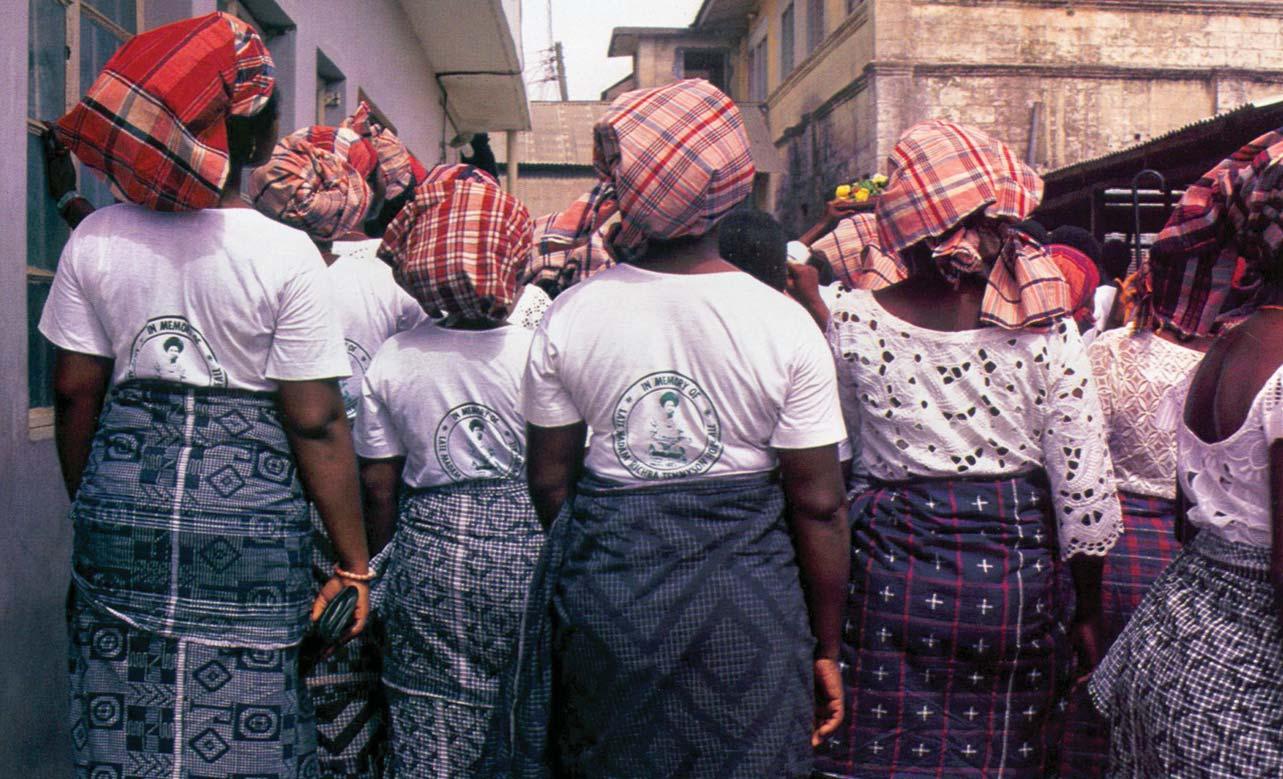








and the fabric assumes a new avatar without looking faded or dull. The warp was generally dyed in indigo and turmeric (yellow). And the indigo base combined with yellow produced green that ran on the weft when soaked in water creating new shades and solid colours.
During the 15th century, other trade routes carried the plaid cloth into West Africa where Madras Checks was used mainly for turbans and later became a totemic commodity among the Kalabari tribe in the Niger delta. Design scholar Sandra Lee tells us that the Madras Checks arrived in the area as early as 1400 via the Portuguese maritime trade routes. By the 18th century, the fabric was a valued commodity in the



trans-Atlantic slave trade well into the 19th century.
Madras handkerchief
The Madras handkerchief was exported to London where it would be auctioned to traders who used it as an item for barter for slaves in West Africa. Next the RMHK reached the Caribbean and South America where it was used as headscarves among black women.
For 400 years the Kalabari, a small group of Ijo ethnic people in Nigeria, have been trading in the RMHK. An interesting fact is that the community was fused as it were with Indian textiles in daily and ceremonial life.
Madras fabric has a special presence in Kalabari life and is a








symbol of a person’s journey from the womb to the tomb. Kalabaris call the fabric Injiri. It is part of the ceremony of the veneration of life. So much so that the brides of West Africa, the Gold Coast and Ghana loved to have their gowns tailored from Madras Checks in the early 18th and 19th centuries.
The Madras Checks cloth also forms an integral part of the funeral ceremony for the Kalabaris, and in the process called ede deis, when the walls and









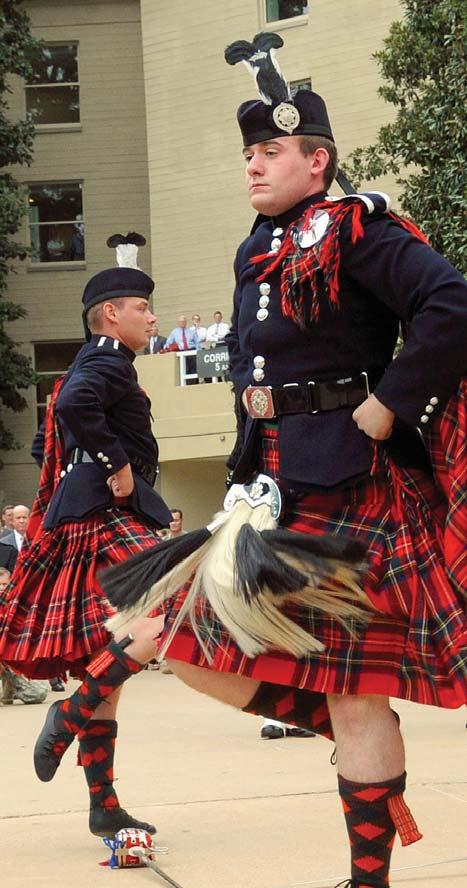






ceilings of the room are lavishly decorated. These cloths are preserved and loaned to others who would need them. The family status is assessed by the number, type and age of these cloths.
Coming to contemporary use of the Madras Checks, thanks to the preppy world’s love for the unusual and to the brilliant marketing, wearing plaids became a mark of affluence where the presence of slaves in South America was completely ignored. Machine-made imitation plaids were manufactured in Japan, Switzerland, England and France.
In the 1960s, the popularity of Madras Checks peaked, and in the Nigerian market, handloom checks were still imported under the name Real Madras Handkerchief, which was quite robust. In the 1970s, Nigeria imposed a ban on a variety of goods due to political instability



Madras was founded not for spices and gold but for cloth.
and the import of RMHK collapsed.
Bleeding Madras was made popular by Captain CP Nair, founder of the Leela Group. In the fifties he showed an American exporter a fabric which was woven in Chennai for South Africa, using natural dyes, and one which would run colour and change form after every wash. The exporter ordered 10,000 yards and the cloth tailored into stylish garments sold at Brooks Brothers, New York.
The exporter threatened to sue Captain Nair when the fabric really bled, but the latter pointed out that he had warned him earlier. When the Editor of Seventeen magazine ran a story on Bleeding Madras, the first order was that of a million yards. They were woven all over Chennai and later in Andhra Pradesh.
Resuscitating the market for handloom Madras would mean bringing in the textile’s cultural history and reintroducing it to the place that gave birth to it, not in another form like sarees or lungis, but as a fashion fabric which would find its niche in a global luxury market place. Designed by Krishnapratheesh




Shekhar Mehta
Rotary India Literacy
Mission has partnered with two prestigious Indian Government programmes held in September — Swachhathon 1.0- Swachh Bharat Hackathon and Mera Swachh Vidyalaya — to create awareness on cleanliness and sanitation in school toilets.
While a main component of our Happy School programme is construction of separate toilets for boys and girls, how many of us ensure that these toilets are kept clean? Dirty and unhygienic toilets cause various health issues,
which eventually lead to children dropping out of school. Thus, the quintessential idea behind our Child Development and Happy School programme is defeated. Joining the government programme will further strengthen the T-E-A-C-H programme.
The objective behind Swachhathon, for which RILM was a knowledge partner, is to find solutions to some of the pressing issues faced by schools and communities. The main aim of this campaign, in which we partnered, was to approach
various colleges/schools/organisation/IITs, startups and others to come up with exciting, innovative, novel and viable solutions to improve the operation and maintenance of school toilets; find sustainable, environment-friendly and affordable toilet technology for hilly, dry, flood-prone and remote areas; find technological solutions to monitor the usage of toilets and bring in behavioural change for toilet usage and hygiene, menstrual hygiene and early decomposition of faecal matter.
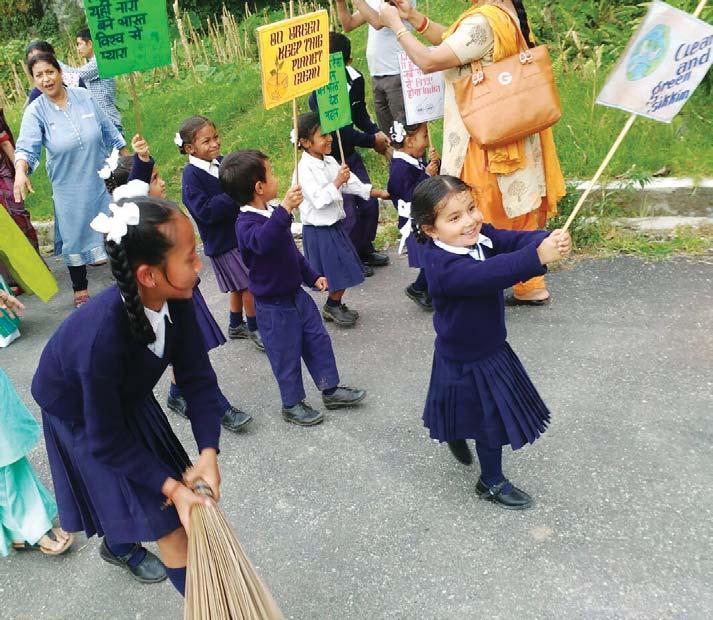
During the 10-day campaign, 3,054 applications were received, of which 428 were registered, winners announced and awards given on September 8, International Literacy Day. RILM was part of the jury. With the HRD Ministry, RILM has joined to create awareness about cleanliness in schools and bring behavioural change through interactive activities. Rotarians, Inner Wheel members, Rotaractors, Interactors and RILM’s partner organisations took up the campaign in an active way. They approached various schools across India and asked them to engage in one or more of the following activities during September 1–15. Essay competitions, drawing/poster campaigns, slogan making etc were organised.
RILM united the entire country for the cause of literacy on the International Literacy Day, with Rotarians and Inner Wheel members undertaking various activities under T-E-A-C-H, the objective of which is Total Literacy and Quality Education.
Activities included anything under the Mera Swachh Vidyalaya campaign, giving Nation Builder Awards to outstanding teachers or any other T-E-A-C-H activity. Rotarians and Inner Wheel members trained and felicitated outstanding teachers, set up e-learning centres, tutored adults and opened adult literacy centres, or transformed schools into Happy Schools.
RILM signed an agreement with the National Institute of Open Schooling at the NIOS office in Delhi for conducting Basic Literacy Programme (BLP) Assessment for non-literate persons above 15, who have undertaken RILM’s Adult Literacy programme. Exams will be held twice a year, in March and August.
Rotary and Inner Wheel clubs implementing the Adult Literacy programme will have to register the adult learners two months before the scheduled exam at Rs 120 a person. RILM is currently working out a registration process for the learners in coordination with NIOS.
From March 2018, Rotary and Inner Wheel clubs will be able to conduct the BLP assessment at the Swabhimaan centres and RILM will directly coordinate with NIOS for evaluation of the same. This partnership comes at a time when Rotarians and Inner Wheel members across the country have taken up the Adult Literacy programme with unparalleled vigour. This collaboration takes us one step closer to reaching out to the 28 crore non-literate adults, make them
literate and help India achieve Total Literacy.
An agreement was signed with Indian Career Education and Development Council (ICEDC) and Global Education Solutions (GES) for providing teacher training to government school teachers in Maharashtra. The training modules include: Life coaching techniques to manage behaviour of a class by helping students develop selfdiscipline, manage stress, maintain motivation, develop a sense of purpose, take accountability for their actions and help keep their peers on track.

Using differentiated teaching techniques, so that all students within a classroom can enjoy and learn effectively, irrespective of their different abilities, and have an equal opportunity to succeed.
Simple lesson plan methodologies to impart advanced life and work skills, develop right attitudes and
The objective behind Swachhathon was to find viable solutions to improve the operation and maintenance of school toilets and bring in behavioural change in children.
values across the curriculum, to make learning relevant, engaging and fun.
In RI District 3131 from September 13–18, over 250 teachers were trained. The clubs which participated in the training include RC Pune Sports Club, RC Pune Gandhi Bhavan and RC Pune West End.
Everyday a batch of approximately 40 teachers were trained. The teachers were extremely happy with the training that was provided. During the first two days, 88 headmasters attended the training. They went back to their schools to encourage the teachers to attend it.
One teacher said, “The training was excellent and inspired us a lot. It is difficult to express our gratitude.”
Post training, there will be regular mentoring of the teachers followed by certification of the teachers.
The writer is a past RI Director. Designed by L Gunasekaran
Be it the first day at your dream job, your first presentation to the board of directors or your first award receiving ceremony from the global CEO — your smile is the foremost feature that people notice. For those who dread wearing braces and they need to be kept on at least for 12 months or more, there is a new choice now available in the form of clear aligners, which are made from elastic thermoplastic material and are biocompatible.
Underling the effectiveness of clear aligners, Dr Ashish Gupta, an orthodontist from Panchkula, Haryana says, “Fixing the alignment of your teeth will not only give you a gorgeous smile, but will also reduce the appearance of the ageing lines around your cheeks and lower lips, giving you a youthful appearance.” This is possible, he says, with one simple treatment — “clear aligners, which are the virtually invisible, comfortable and removable alternative to braces, to help you get a winning smile.” Today his orthodontic
practice has at least 50 per cent people wanting clear aligners.
These are manufactured by several companies in the US and depending on the brand, the cost varies between Rs 1.5–4.5 lakh. They are estimated to have been tried by over four million people globally, he says. They are now being manufactured in India too, but in his practice, he uses only the FDAapproved international brands.
Dr Gupta says that today, with the application of advanced technology, clear aligners are able to treat a broader range of teeth straightening issues with greater precision. They can be used for crooked or protruding teeth, crowding, serious malocclusion, overbite, or underbite, using both non-extraction and extraction approaches.
However, a good section of dentists and orthodontists don’t agree with this point of view, and believe that clear aligners are not as effective as the good old dental braces and do not give results as good as the traditional braces.
Dr Gupta says not many people know that a “deep bite can actually

make you look older and by correcting that, you can arrest ageing of the facial lines around your cheeks and lower lips.” He believes clear aligners can correct such complex deep bite cases.
A popular alignment option globally, the clear aligners are now available in India. Invisible, removable, and easy to use, clean and maintain, these aligners are custom designed and manufactured for individual patients. Over time, the trays slowly shift your teeth in the direction prescribed by the orthodontist.
There are no dietary restrictions or changes in one’s cleaning and flossing routine, he adds.
Dr Gupta says the best thing about this therapy is that “the patient need not see us for two to three months, as we give the fabricated aligners to her and she can change them herself every two or three weeks as prescribed.”
Ideally, such aligners have to be worn for at least 20–22 hours a day, and the patient has to remove them while having a meal.




nteractors of District 3141 had fun time celebrating their 13 th District Conference, titled Udaan , at the Bhaidas Auditorium in Vile Parle. The event, organised by RC Mumbai Juhu, was co-hosted by the Interact Clubs of Rajhans Vidyalaya and Maneckji Cooper School. More than 800 school students from 29 Interact clubs participated in the programme.
Competitions and cultural events centred around the theme: water conservation and organ donation.
With 210 participants, the Interact Club of Rajhans won the award for maximum participation, while RC Bombay West was recognised for having the largest number of Interactors — 71 children from four Interact clubs.
The conference was inaugurated by DG Prafull Sharma. Vice DG Lata Subraidu distributed the prizes.
Most of us must have come across philatelists (who collects postage stamps as a hobby), numismatists (coins and papermoney collectors) and deltiologists (post card collectors). Well, I am a phillumenist. Phillumeny refers to the hobby of collecting matchbox labels. It is not half as popular as stamp and coin collecting. My collection of matchbox labels exceeds 8,000 on various themes.
Matchboxes were an integral part of every household before the advent of lighters, though they still hold pride of place in rural kitchens, places of worship and in a man’s pocket to light a cigarette or beedi.
The production of handmade matchboxes was started in 1923 in Tamil Nadu at Sivakasi, then at Sattur in 1924 and later in 1932 in Kovilpatti. The first matchboxes in India were made in 1912 in Kolkata by Japanese traders, but today Sivakasi is the largest producer in India.
Matchbox labels are an expression of popular art or they


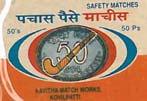

commemorate events that go down in history. Panjah and Janata labels carry the sentiments of the Congress and Janata parties. Portraits of royalty, freedom fighters and even replica of Raja Ravi Varma’s paintings have featured in the labels.
At the end of the First World War labels printed in countries such as Japan, Sweden and Australia were pasted on the Indian matchboxes.
I started collecting matchbox labels as a schoolboy, continuing it for 30 years now. The hobby has
often embarrassed and angered my family members as I would dig into garbage dumps or heaps of household waste hoping to find one more matchbox label to add to my impressive collection.
Much later, my family realised that I’m not alone; there are many more phillumenists world over who are crazy about this hobby. All those who scorned my habit of picking up matchboxes from garbage dumps, are now helping me with interesting labels that they come across.
I am planning to organise an exhibition of my collection soon to attract children and adults to this hobby. With better awareness the day is not far when many more phillumenists will emerge. Let the tribe thrive.
The writer is past president of Rotary Allahabad South, D 3120.
Anil Sutradhar (92) recalls with pride that his art took him to places he had hardly dreamt of. The nonagenarian, who needs a stick to balance his wobbling legs, has hung outside his house a signboard with names of the
countries he has visited and the years of his visits.
Sutradhar is a Chau mask maker and dance artist residing in Charida village in Purulia, around 300 km from Kolkata. He is perhaps the oldest artist who is well versed in


making Chau masks. Chau is an acrobatic martial art-based dance form where the performers wear masks and dazzling costumes. Sutradhar quit dancing several years ago as he grew older, but continues to make Chau masks in his village.






Charida can be rightly termed as an ‘artisans’ village’ as around 250–300 families earn their livelihood by making the masks.






Charida village has the distinction of being the only place in the world where Chau masks are being manufactured. The tradition of making the masks began during the rule of King Madan Mohan Singh Deo of Baghmundi around 150 years ago.
“The artists used to perform in the King’s palace but slowly the art spread to nearby villages,” says Sutradhar. Till the early decades of this century, the dance form was patronised by the Baghmundi rulers, but due to unproductive land and less monsoons, they could hardly provide necessary support. The performers were forced to look for new areas to sustain their livelihood, he added.
Charida can be rightly termed as an ‘artisans’ village’, as around 250–300 families earn their livelihood by making these masks. Several shops selling the masks dot the village. Many of these craftsmen sell the masks from their homes. Interestingly, all the artisans have the common surname of Sutradhar.
There is huge demand for the masks in foreign markets but we lack proper export channels to meet it.
Raju, one of the artisans, is busy giving final touches to a Chau mask. With bulk orders, he hardly has time to spare, but agrees to explain the process that goes into making the masks. “A clay model of the mask is first made and dried in direct sunlight. It is then covered with powdered ash. Then successive layers of soft paper pulp mixed with gum from mulberry plant are pasted on the cast. After the rough foundation, the finer details are skillfully carved by applying a thin layer of clay. The entire cast is again dried in the sun, after which it is wrapped in a clay-soaked muslin cloth for a smooth finish. It is then polished with a wooden spatula.
After a layer of zinc oxide, the mask is painted and decorated according to the character,” he says. The masks are generally inspired from mythological characters but some modifications have come up with the changing times, he adds.
He says that though they continue to make masks across the year, the season normally is six months, from March to May and November to January, when the dances are held in different villages.
The artisans rue that the mask-making can be a good market, nationally and internationally, but lack of infrastructure is a big hurdle. “Our village has good potential to attract tourists but lack of lodging
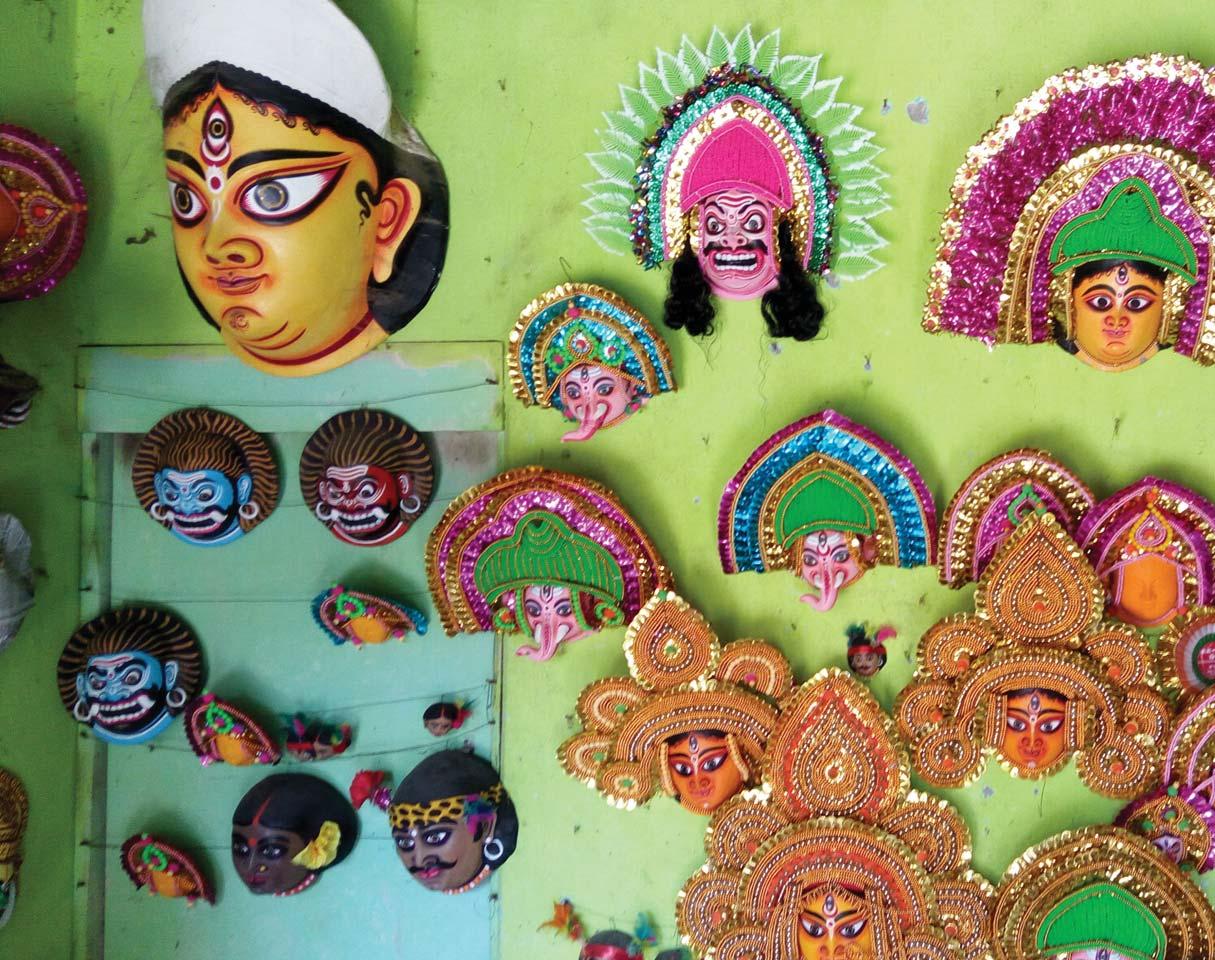


facilities is a major roadblock. There are neither toilets nor decent food choices. The government has come with Biswa Bangla stalls to sell handicraft items but the rate of procurement is very low and all the artisans are not generally involved,” says Falguni Sutradhar, who has practised this art for over three decades.
Raju Modak (25), an artisan, says that the business can be more profitable if the government shows more involvement. “Banks do not help us with loans as most of the artisans are defaulters. The art is unique and can be taken to other parts of the world. There is huge demand for the masks in foreign markets but lack of proper channels for exports prevents us from meeting it. The village has tremendous scope to contribute to State tourism being at the foot of the Ayodhya Hills, a tourist attraction.”
The State government "is helping them by organising fairs and other platforms to showcase their products. We are planning to come up with a cluster in Charida to bring different artisans under one roof. Their market has definitely increased in the past few years and more steps for their benefit would soon be taken,” said a government official.
Designed by N Krishnamurthy
Sheela Nambiar

Wabi Sabi is a Japanese ideology implying a simple philosophy — nothing is perfect; nothing is permanent and nothing is finished. But… you make your peace with it.
This is very relevant to health, weight, fitness and wellness. It seems to imply that you accept the deterioration of your body or consider obesity, ill health and disease a natural part of aging and make peace with it. Since nothing is perfect, why bother trying to make it so? Since nothing is finished, why bother starting? And since nothing is permanent, what is the point of attempting to stay fit or improve health?
To me, however, it embodies something slightly different. It signifies the very essence of taking care of oneself for the right reasons, using the right methods.
Nothing is perfect
Life situations are never perfect. But you make the best of them.
Sometimes, you may not have the time to exercise, you may be travelling or have sick kids to contend with. You may work long hours, be stressed and live under duress of deadlines.
You don’t always have the time. You make the time. That’s just what you do when something is important enough in your life.
Even a 20-minute workout at home is better than nothing at all if you can’t get to the gym. A quick run on the treadmill or a swim in the pool in your hotel while you are travelling is better than sulking about your endless travel and how it impedes your fitness.
You may be obliged to attend lunches and dinners. This does affect your diet resolutions, but instead of sampling everything on the menu and
living with the guilt, strategise how to eat sensibly. Weigh your food options and make reasonable choices at every meal. Compensate for an indulgence by having a few light meals and making sure you work out. These are coping mechanisms to stay on track.
We have been programmed into believing in the kind of physical perfection portrayed by the media. Not everyone can look like the model on the cover of a magazine, not even the model on the magazine cover! Trying to look like somebody else is a wasteful exercise. Trying to adhere to the dictates of society to be certain size or appear a certain way will not necessarily get you a healthier body. Rather you’ll end up with lot of angst and frustration.
Instead of watching your weight, counting calories, exercising maniacally, talking endlessly about it and worrying about not losing weight all the time... spend time establishing healthy life habits.
The human body is a work in progress. We usually start exercising with simple goals — lose 10 kg; get into that dress; run a marathon or trek up the Himalayas.
Once we achieve those goals, what next? We must continue to include fitness in our day. Change our routine to make us better. Try new forms of exercise.
Mostly, we are in a hurry to perfect and finish a process. We forget that the
process itself is part of the journey and is more relevant than the end-point. The journey is the ‘now’; the destination is the ‘future’. We are in a hurry to lose weight, to reach the destination faster. We find ways to do it quickly, shabbily and with no regard for the true physiology or functioning of the human body.
We fail to understand that we as humans can never be a finished product, perfect or permanent. If we lead mindful lives, our bodies are ever changing, evolving and progressing.
Fitness is a journey, not a destination.
In our quest for weight loss and looking better, we tend to lose perspective. Understanding the bigger picture, that losing weight should not be the one and only priority, is what keeps people from falling off the wagon. If people spent half as much time focusing on their health and fitness as much as they’re focusing on their physique, they’d be much better off and more successful at it. Feeling defeated by a few setbacks and giving up at the first signs

of difficulty is a sure way to take two steps forward and three steps back. Pick yourself up and move on! The difference between those who manage to stay on track despite hurdles and those who take detour on their way is purely their belief in themselves that they can!
Nothing is permanent Life changes. We change. Nothing is permanent.
We age. That is the normal physiological process. Yet, youth is revered. Even when we know it is never permanent, we strive to hang on to it with our teeth and the tips of our fingernails. The tremendous surge in people for Botox, lasers, facelifts and tummy tucks are testimony to our infinite need to stay young and beautiful.
Aging gracefully is an art. Keeping your body strong, all the while growing intellectually and spiritually, is not the same as trying to hold on desperately to youth. Work

with the flow, rather than against it. Build strength, maintain stamina, improve flexibility.
Understanding that nothing is permanent should keep us moving forward. Even good health, a great body, astounding intellect or a superior athletic capability, is not permanent unless you continue to work at it.
Even elite athletes know that their athletic prowess declines with age. Our bodies change in myriad ways as we age and we need to look at ways of working towards bettering ourselves. We may not be able to run a marathon in our later years (although many do), but we will be able to continue to exercise, strengthen our bodies and keep ourselves free from disease. We don’t have to succumb to obesity or ill health resulting from poor lifestyle habits.
- When you value your body for its uniqueness and for what it can do rather than simply what it looks like.
- When you actually listen to it, give it what it needs not just what you want.
- When you stop punishing it for not looking the way you think it should.
- When you use exercise as a way to celebrate and enjoy your body’s capabilities.
- When you thrill in the aftermath of a long strenuous weight training session or feel the joy of quivering legs after a run...
Then fitness has become a way of life for you and not just a means to an end... and this in itself is a gift.
The attitude that allows a semblance of peace within us is one of coming to terms with a situation — accepting the imperfect, impermanent and unfinished nature of everything and yet staying motivated to continue to improve one’s body, mind and life.
The author, an Obstetrician and Gynaecologist, is a fitness & lifestyle consultant, and has published two books: Get Size Wise; Gain to lose www.drsheela.nambiar.com


mega organ donation awareness rally was conducted by the Rotary clubs of Sri Ganganagar, Rajasthan, under the leadership of Dr Sandeep Chauhan, President, RC Sri Ganganagar recently. School students and other citizens participated in the event, attended by DG Bagh Singh Pannu and the presidents and secretaries of several Rotary clubs.
About 1,500 enthusiastic school and college students and teachers participated from prominent educational institutions, some raising awareness on organ donation by dressing up as different organs with attractive slogans.
The colourful rally that traversed a distance of about 4 km, became an iconic event in the city. Dr Sandeep Chauhan explained the concepts and procedures for organ donation and said one brain- dead patient can save nine lives and help 50 living persons. His passionate plea for pledging organs motivated many youngsters, middle-aged and senior citizens to voluntarily pledge their organs.
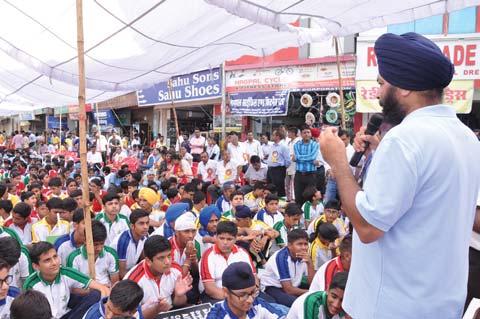
DG Pannu declared that he and his family will take the organ donation pledge that day. Praising RC Sri Ganganagar for the great event and complimenting Dr Chauhan, he said this rally was one of the best ever held in the city.
If you’re planning to attend the 2018 Rotary International Convention in Toronto from June 23 to 27, you’ll want to experience the city’s colourful neighbourhoods. For those on a tight schedule, here are some top picks.
Less than a mile northwest of the Metro Toronto Convention Centre (MTCC), you’ll find Queen West, a lively neighbourhood that has dozens of boutiques and restaurants. Cross Bathurst Street into West Queen West, and you’ll see dozens of art galleries and bars with live music.
In nearby Chinatown, the streets are packed with people shopping for
Randi Druzin
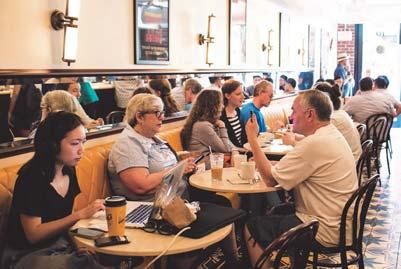
inexpensive housewares, fruits and vegetables. The restaurants are a big draw, especially if you love dim sum and dumplings.
Walk northwest a few minutes from Chinatown and you’ll end up in centuries-old Kensington Market,
which has vintage clothing stores, grocers, eateries and other shops.
A short cab ride from the convention venues, the Distillery District has many cafes, restaurants, and shops housed within heritage buildings of a 19th century distillery. This pedestrian-only area has the largest and best-preserved collection of Victorian-era industrial architecture in North America.
© The Rotarian Register for the 2018 Rotary Convention in Toronto at riconvention.org.
Arch Klumph Society 2016–17
from India
Narayan and Sunanda Nayak
RC Bhubaneswar Metro
Navdeep and Amita Chawla
RC Faridabad Central
Parag and Punam Sheth
RC Bharuch Narmada Nagari
Ravi and Rajyalakshmi Vadlamani
RC Guntur and RC Guntur Aadarsh
Subhash and Babita Jain
RC Ghaziabad Central
Suresh and (Late) Usha Jain
RC

Amedical camp was held at Nehru Memorial College, in association with the Frontline Hospital, Trichy. Over 200 people were screened and treated for various ailments. The club also took out a hygiene and dengue awareness rally in which 400 NCC students participated.

School uniforms, shoes and socks were distributed to 100 tribal students at the Zilla Parishad Primary School in Triambakeshwar. Jayant Joglekar, a club member, also sponsored 150 tracksuits for the girl children at Kanya Chhatralaya located in a tribal area near the city.
Arally to create awareness on eye donation organised in the city had a participation of over 750 college students. Members of the Inner Wheel and the Lions clubs too pitched in.
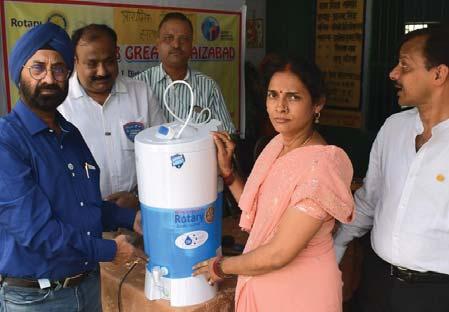
The club donated water filters to provide clean drinking water for the staff and students of its adopted government school at Salarpur in the presence of DG Ranjeet Singh and Club President Manish Agarwal.
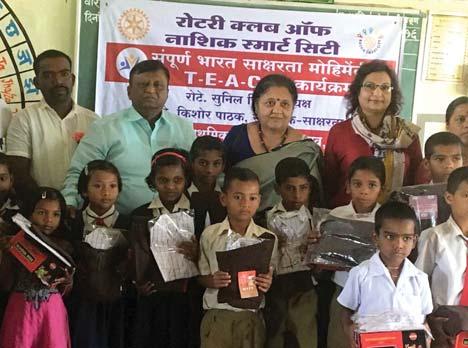
RC Poona Downtown — D 3131
The club’s global grant project of providing toilet blocks, drinking water and hand wash facilities in 14 rural schools was chosen by TRF’s research team members, Amanda Reid and Jessica Butler, to train TRF’s cadre of technical advisors comprising past governors and club presidents across India.

Rotaract Club of Jalna Central — D 3132
The Rotaractors organised a chess tournament for schoolchildren. Over 500 students took part in it. Prizes were given to the winners and participation certificates distributed to all participants.

Four baby warmers costing Rs 5 lakh were donated to the neonatal unit of the LT Municipal General Hospital and Medical College, Sion. DG Prafull Sharma dedicated the equipment to the hospital.

Notebooks were distributed to students of government schools to encourage them in their studies. The Rotarians addressed the students on the importance of pursuing their education which will provide them a strong foundation for a good future.
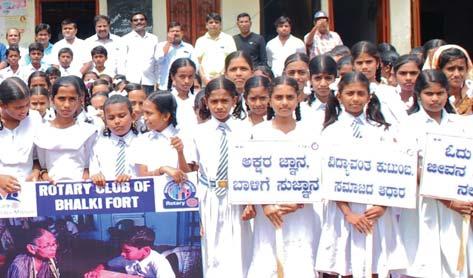
Aliteracy rally was staged with schoolchildren from Sadguru Vidyalaya marching down the major streets of the town to spread the message of education as a tool for empowerment.

Two battery-operated ferry carts will be operated and maintained by the club at a cost of Rs 40,000 per month for two years. The unique service at the railway station will help the aged and disabled passengers. An MoU was signed with the Central Railways for undertaking the service.

Over 4,000 notebooks worth Rs 1 lakh were distributed to 700 schoolchildren from eight government schools in the town and surrounding villages of Karkala taluk in Udupi district.
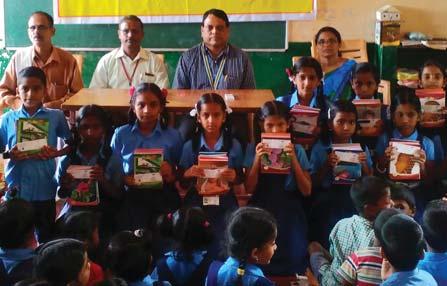
The club provided medical insurance cover, in association with the New India Assurance Company, for physically-challenged people at Sai Kripa Special School in Tirupur.

Amarathon to create awareness on cancer was flagged off at V O Chidambaram College. More than 500 school/college students participated in the 4.5 km run.
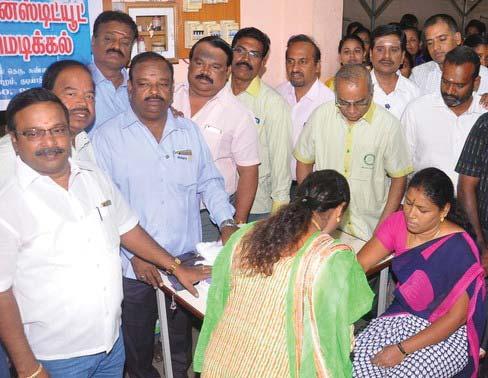
An anaemia detection camp was held in Gudiyattam benefiting 165 women in the neighbourhood. Vitamin tablets and iron supplements were given to the needy to treat the disorder.


To mark World Literacy Day, the district, through its Project INDICA, honoured 27 teachers who provide education for special children. The Project Chairman Mythili Muralidharan and chief guest DGE Babu Peram lauded the teachers for spending their time to make a positive difference in the lives of the differently-abled.

AWinS programme was organised in various schools in the city. The Rotarians educated the students on best hygiene practices and distributed liquid handwash sachets and brochures detailing handwash procedures to them.

Chairs, tables, projector and a screen for e-learning were provided to Umang Bal Vikas, a school for the speech and hearing-impaired children in Digha. The project will benefit 150 students at the centre.
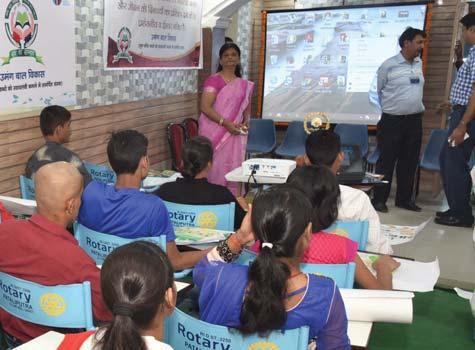
Seven teachers of government schools were recognised with Nation Builder Awards for outstanding service in their vocation at an event marking Teachers Day by the club. All teachers who are Rotarians were also felicitated on the occasion.
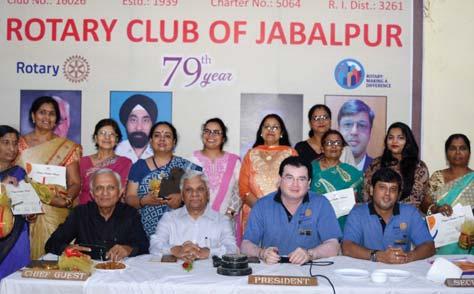
The club, in association with Rotaract Club of Purulia Central, conducted an inter-school football tournament at the Sainik School in the city. Sixteen schools participated.
Compiled by V Muthukumaran
Designed by L Gunasekaran
Tata Technologies, a global IT conglomerate, has signed an MoU with The Rotary Foundation to support poor children. It has identified the need for encouraging and helping children to learn with the help of technology. Popularly known as “School and Teaching Excellence Programme” or STEP, this project is targeted at underprivileged students and brings in technology as a teaching aid to improve student retention and enhance their overall academic performance.
The ultimate objective of Tata Technologies is to extend its STEP initiative at a national level to cover the goal of basic education and literacy for all. In partnership with TRF, it aims to reach this

programme to over 1,000 schools all over India.
An agreement of cooperation was signed at the Hinjewadi headquarter of Tata Technologies by its Chairman S Ramdorai, Global CEO Warren Harris, PDG Ravee Dhotre and District Foundation Chairman Deepak Shikarpur.
The Kalinga Institute of Social Sciences (KISS), Bhubaneswar, has recently been granted University status by the HRD Ministry, making it the first exclusive tribal university in the world. It has also been accorded Special Consultative status by the United Nations Economic and Social Council.
The institution, founded by Professor Achyuta Samantha in 1993 with just 125 children from the neighbouring tribal areas, has grown over the years, with 27,000 students now.
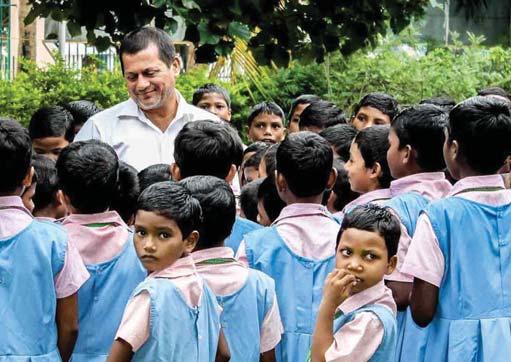
It offers holistic residential education from kindergarten to post graduation, along with vocational skill training and healthcare facilities, free of cost for all tribal students. Branches are to be set up in 30 districts of Odisha and other States over the next decade to provide education to 200,000 poor indigenous children.
Rotary News had featured about the institute in its October 2014 issue ( https://rotarynewsonline. org/their-smiles-tell-the-story/ ).

A Silicon Valley CEO, Eileen Carey, who runs a software company and is a blonde, said she dyed her hair, wore loose-fitting clothes and switched her contact lenses for glasses “to look older and be taken seriously” in the workplace. She told BBC News she first dyed her hair on advice “given by a woman in a venture capital”, who said that brunette women CEOs would be taken more seriously by investors. Many women said on Twitter that this kind of pressure is “nothing new”.
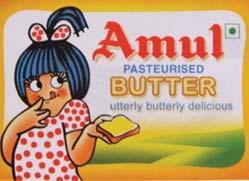
When dairy giant Amul tweeted a business proposition to Indian Railways that said: “@RailMinIndia, Amul is interested in using refrigerated parcel vans to transport Amul Butter across India. Request to please advise”, the Indian Railways quickly responded with the tweet, “IR will be utterly butterly delighted to get the taste of India to every Indian”. The reply, using the dairy brand’s tagline, was greatly enjoyed by the twitterati. The refrigerator van was introduced by the Railways a few years ago to transport perishable goods. The senior divisional manager of Ahmedabad Division will meet Amul’s authorities for further discussion.

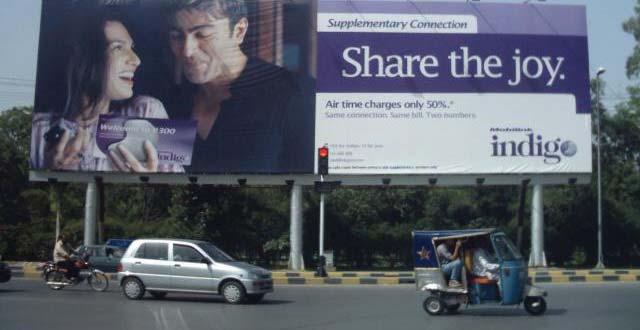
With the ambient levels of air pollution on the rise, Dhruv Suri, an aeronautical engineering student of the Manipal Institute of Technology, along with batchmates Rahil Nayak and Priyanshi Somani, have conceived a billboard that incorporates an air purifier. The GreenBoard looks like any other billboard but has an internal purification system that draws air in through a large fan, absorbs the carbon dioxide in the air and gives out clean air. The trapped CO2 is pressurised and turned into pellets to be eventually used in greenhouses that use the gas. A 15x21 feet billboard will cost about Rs 10 lakh and the air purifier can be customised to fit billboards of any size.

A letter written by Alexander Oskar Holverson, a passenger aboard the Titanic, was sold for $166,000 at an auction in England. Holverson, who was on the doomed liner, had penned the letter on embossed Titanic ‘on-board’ paper to his mother, describing his impressions of the ship, the food and music and rubbing shoulders with celebrities. He had mentioned in the letter about the American financier John Jacob Astor, one of the world’s richest men at that time. “If all goes well we will arrive in New York Wednesday A M,” said the letter dated April 13, 1912, a day before the ship’s fateful encounter with an iceberg.
Singapore will stop adding new cars and motorcycles to its roads from February 2018 owing to limited land area. With more than 600,000 cars plying on its roads, the government has been gradually reducing the vehicle growth rate from 0.25 per cent a year to zero per cent. This policy will be reviewed in 2020. With 12 per cent of the total land area taken up by roads, Singapore tightly controls its vehicle population, mandating car owners to buy permits, called Certificate of Entitlement, to own a car for ten years. However, the citystate is investing heavily on improving its public transport system.

What do economists do when a politician talks about economics? They snigger and respond in a patronising way with stories about the foolish and the ignorant.
What do politicians do when an economist uses econometrics to make a political point? They start hopping about lest NDTV start snapping at their heels because no politician likes to be told that he or she has failed the poor.
What do bureaucrats in the economic ministries do when they have to deal with both politicians and economists? They ignore both because neither helps them manage policy better. Privately they tell you that both are a terrible nuisance.
What does social media do when it sees these three responses from people it considers to be the root cause of all the troubles in the world? It behaves like a puppy with a ball, going crazy for a few hours with one
Everything can be challenged because the guiding principle is “there is no fact but one fact and that fact is my fact.”
topic before running off after something else.
Last but not least, what do journalists and columnists do when they are confronted by these four? Depending on their mood they write like economists, politicians and bureaucrats. And a few, like me, write like Twinkle Khanna. But unlike me she is bitingly funny!
This is the nature of the policy debate in economics — in India certainly and perhaps in other countries as well I daresay. No one emerges any the wiser from it because of the sheer amount of nonsense and non-sequiturs that are produced by the antagonists and the protagonists.
Therefore I have, over the years, like Isaac Newton written down three laws of public debate in economics. So far no one has been able to contest, let disprove, them. That must mean that they are spatially and inter-temporally valid.
TCA’s First Law: This says that “For every piece of data, there exists an equal and opposite piece of data. This can also be stated as “my data is better than your data.” This frees everyone to trot out their own data or its interpretation. Everything can be, and is, challenged because the guiding principle is “there is no fact but one fact and that fact is my fact.”
TCA’s Second Law: This says that “If every opinion is valid then, by definition, every opinion must also be invalid.” This can also be stated
If you say the sun rises in the East, there is a high chance that the reply will be “but so does the moon, so what?”
in Latin as “Ipsi Dixit” or “because I say so”. This law encapsulates the primary conceit amongst economists, politicians and bureaucrats. They believe that an opinion is valid merely because they happen to hold it. You can see this every night on the TV channels.
TCA’s Third Law: This law says that “To agree is to concede defeat”. This leads every economist, politician and bureaucrat to start every sentence with either a ‘but’ or a ‘no, but’. Try it with your friendly neighbourhood economist, politician and bureaucrat sometime. If you say the sun rises in the East, there is a high chance that the reply will be “but so does the moon, so what?”
If you agree with what I have written above, you can draw three lessons. One, don’t waste your time on debates on economics. Two, check the cost of your shopping each week. And three, without fail see a good film (on TV) every day. This is all there is to economics. The rest is fiction.


I came across this interesting coffee seller, who had stationed his cart outside a retail store in Bratislava, the capital of Slovakia. Having taken a red eye flight from Mumbai, and being bundled in a bus with a group of tourists from India, what he was selling was most welcome! As also his message, of course…
Text and picture by Pervez Bhagat



Regn. No. TN/CCN/360/2015-2017 Licensed to post without prepayment No.TN/PMG(CCR)/WPP-431/2015-2017
Registered with Registrar of News Papers for India 3880/57 Rotary News Published on 1st of every month
Total number of pages in this monthly issue, including cover, 84. Price: Rs 35
